If you’re considering adding an Oncidium orchid to your collection, you’ll discover they’re some of the most rewarding plants to grow. These orchids, often called Dancing Ladies, produce cascading sprays of flowers in yellows, purples, and rich burgundies that can last up to eight weeks. While they’re not the most demanding orchids, they do have specific needs you’ll want to understand before bringing one home.
Contents
- 1 Popular Oncidium Varieties and Their Unique Features
- 1.1 Oncidium abortivum
- 1.2 Oncidium abruptum
- 1.3 Oncidium acinaceum
- 1.4 Oncidium adamsii
- 1.5 Oncidium alberti
- 1.6 Oncidium alexandrae
- 1.7 Oncidium allenii
- 1.8 Oncidium altissimum
- 1.9 Oncidium amazonicum
- 1.10 Oncidium ampliatum
- 1.11 Oncidium ansiferum
- 1.12 Oncidium anthocrene
- 1.13 Oncidium ariasii
- 1.14 Oncidium aristuliferum
- 1.15 Oncidium armatum
- 1.16 Oncidium aspidorhinum
- 1.17 Oncidium astranthum
- 1.18 Oncidium aurarium
- 1.19 Oncidium auriculatum
- 1.20 Oncidium baueri
- 1.21 Oncidium blandum
- 1.22 Oncidium boothianum
- 1.23 Oncidium bracteatum
- 1.24 Oncidium buchtienoides
- 1.25 Oncidium cajamarcae
- 1.26 Oncidium calanthum
- 1.27 Oncidium cariniferum
- 1.28 Oncidium cebolleta
- 1.29 Oncidium cheirophorum
- 1.30 Oncidium chrysopterum
- 1.31 Oncidium chrysomorphum
- 1.32 Oncidium croesus
- 1.33 Oncidium dactyliferum
- 1.34 Oncidium dasytyle
- 1.35 Oncidium ensatum
- 1.36 Oncidium excavatum
- 1.37 Oncidium flexuosum
- 1.38 Oncidium forbesii
- 1.39 Oncidium fuscatum
- 1.40 Oncidium gardneri
- 1.41 Oncidium hastatum
- 1.42 Oncidium harrisonianum
- 1.43 Oncidium lanceanum
- 1.44 Oncidium leucochilum
- 1.45 Oncidium maculatum
- 1.46 Oncidium microchilum
- 1.47 Oncidium ornithorhynchum
- 1.48 Oncidium sphacelatum
- 1.49 Oncidium stenotis
- 1.50 Oncidium tigrinum
- 1.51 Oncidium varicosum
- 2 Essential Growing Conditions for Oncidium Orchids
- 3 Watering and Fertilization Requirements
- 4 Common Pests and Disease Prevention
- 5 Repotting and Propagation Methods
- 6 Tips for Encouraging Healthy Blooms
Popular Oncidium Varieties and Their Unique Features
Oncidium abortivum

A rare species with delicate yellow flowers featuring intricate patterns that seem painted with nature’s finest brush.
Oncidium abruptum
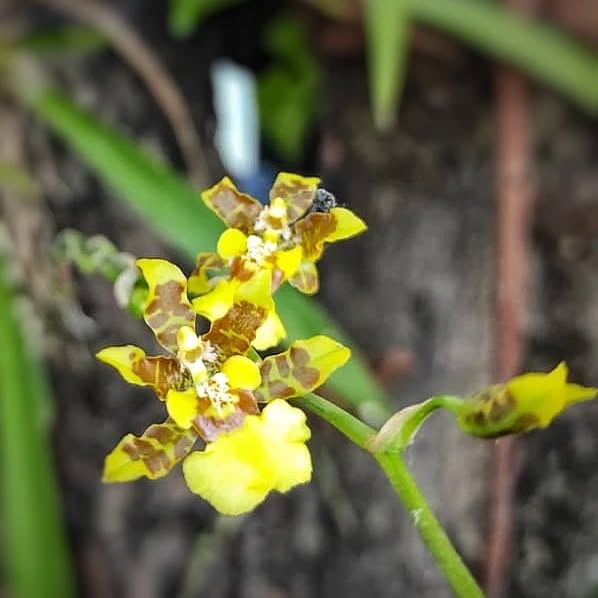
Its vibrant yellow blooms, adorned with bold brown markings, burst with the energy of tropical jungles.
Oncidium acinaceum
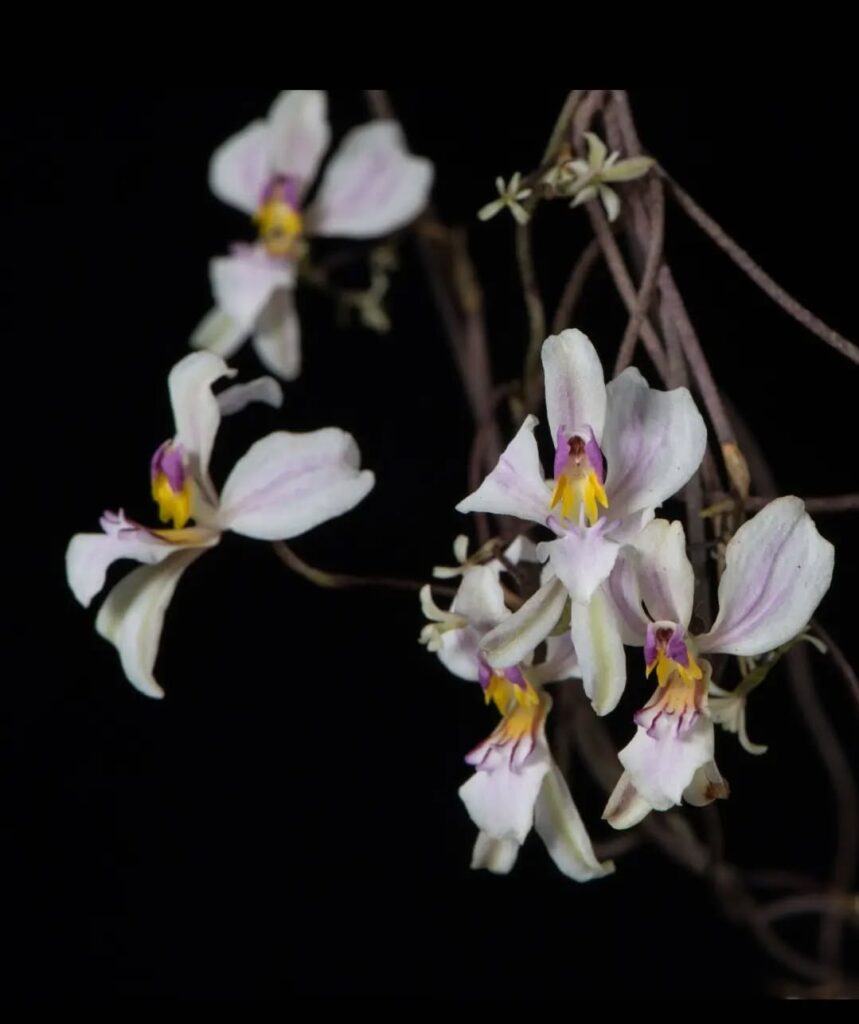
Elongated petals and striking golden hues mimic rays of sunlight breaking through a dense canopy.
Oncidium adamsii
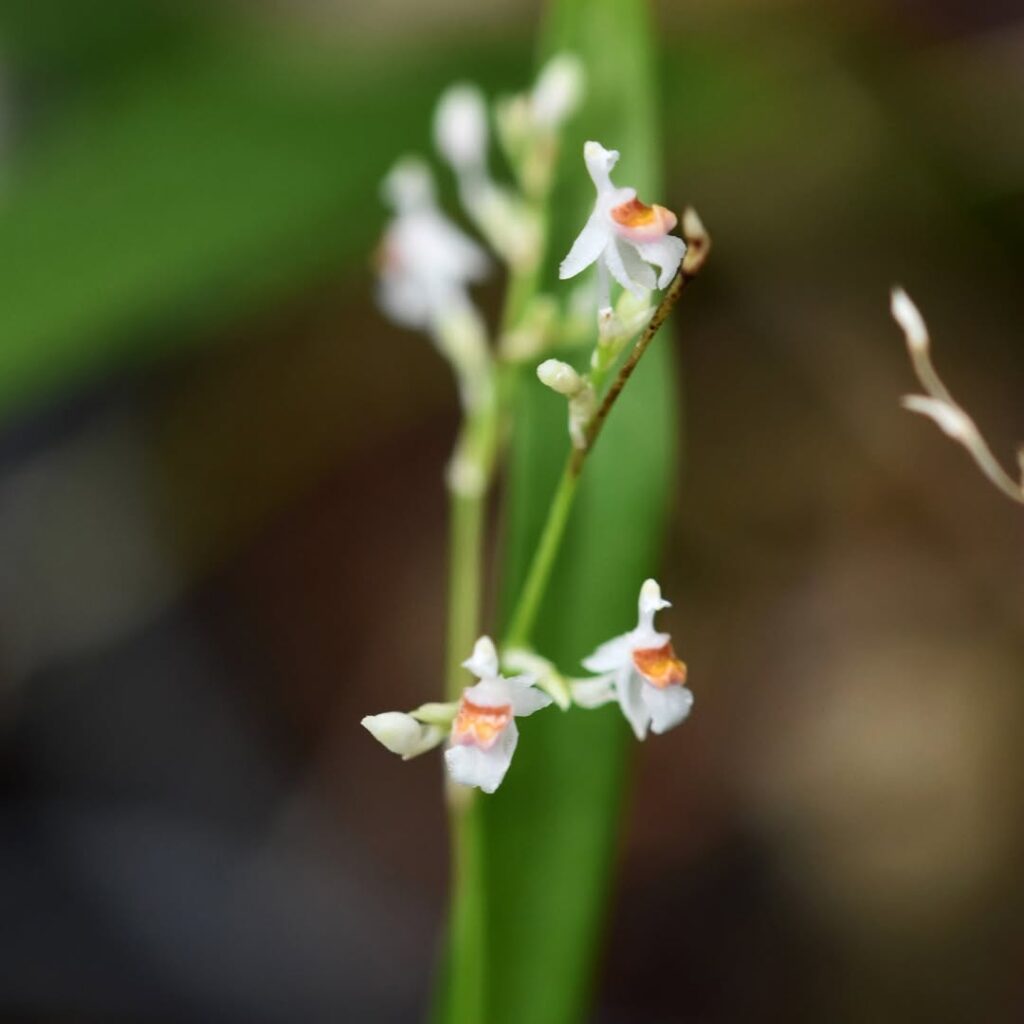
A whimsical orchid with pale yellow flowers and a distinctive lip, perfect for enthusiasts of rare species.
Oncidium alberti
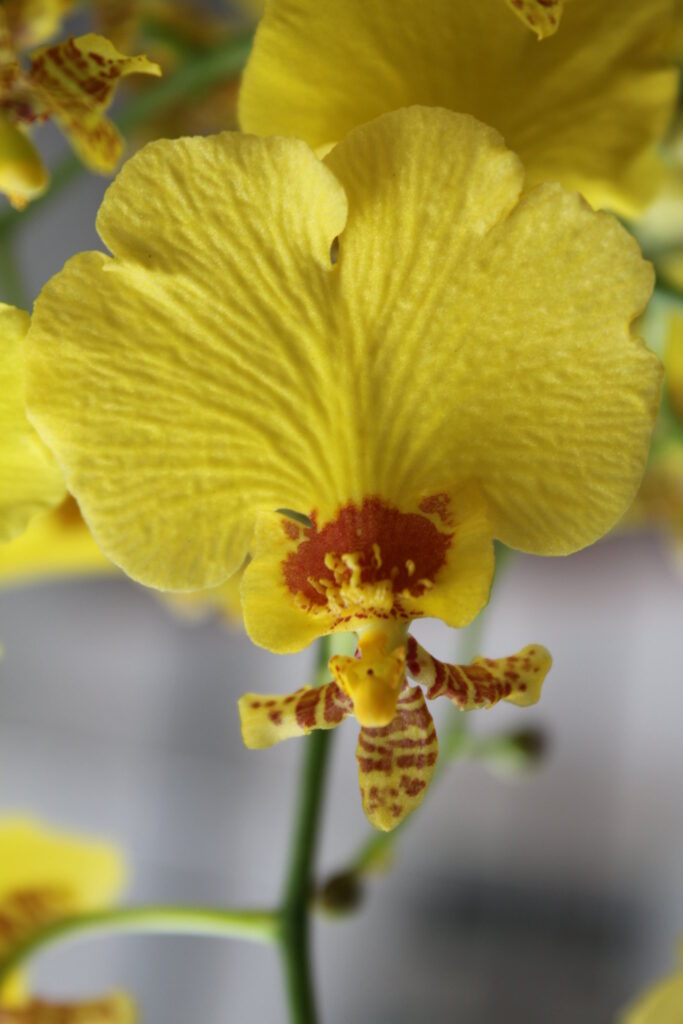
Known for its vibrant yellow blooms that exude tropical warmth and charm.
Oncidium alexandrae

Soft white petals kissed with brown tones bring an air of sophistication and subtle beauty.
Oncidium allenii
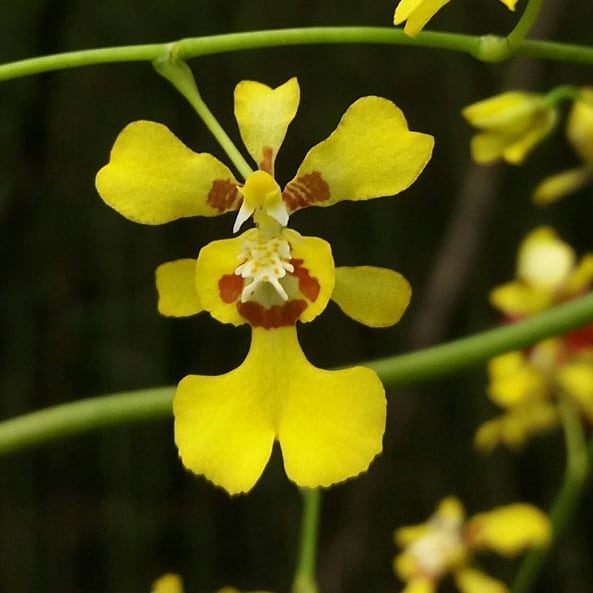
Golden-yellow flowers paired with a delightful scent make this compact orchid truly enchanting.
Oncidium altissimum
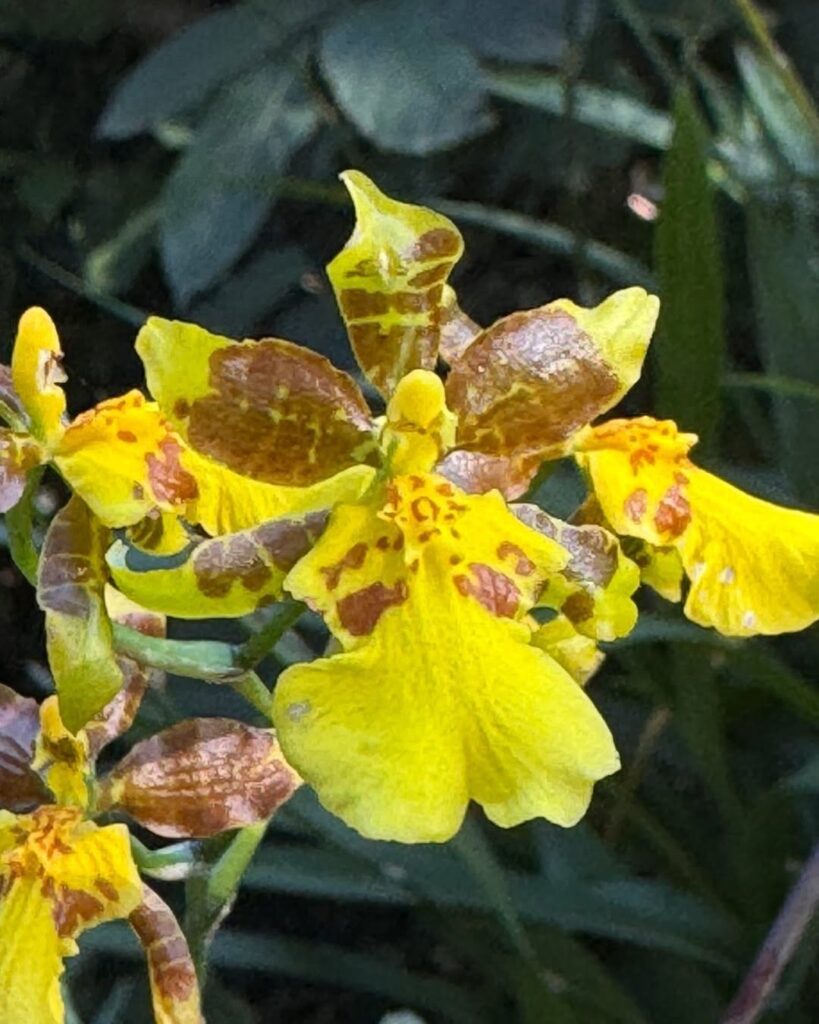
Known as the “Dancing Lady Orchid,” its tall sprays of bright yellow flowers with brown markings resemble a dancer in motion.
Oncidium amazonicum
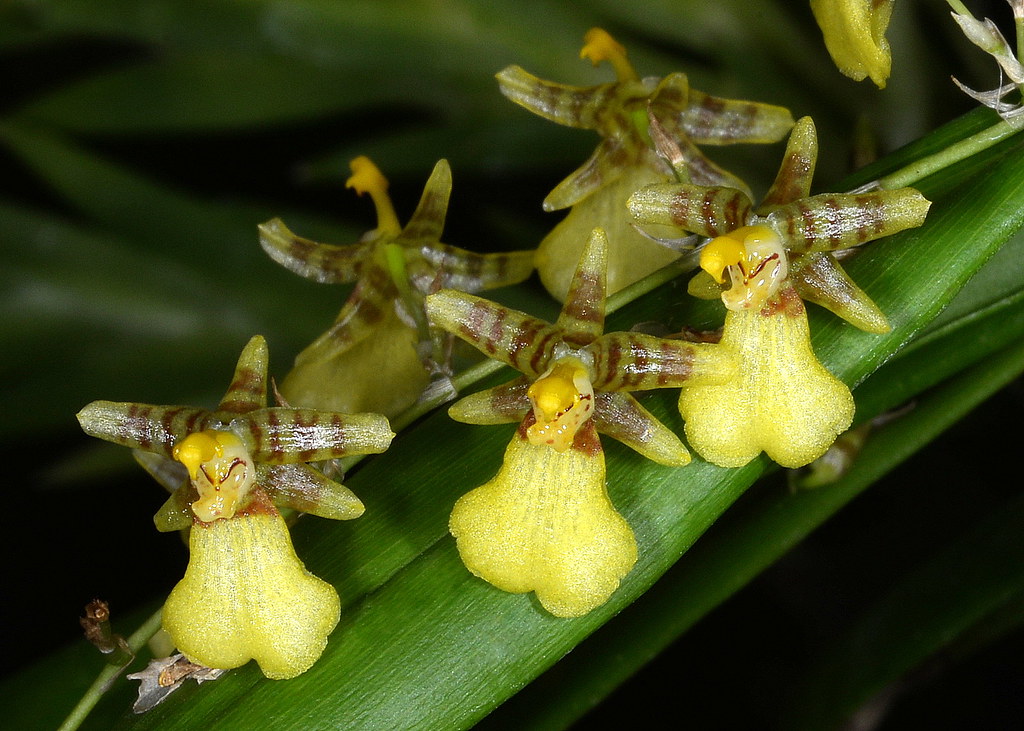
With intricate patterns and a vibrant yellow palette, this orchid carries the spirit of the Amazon rainforest.
Oncidium ampliatum
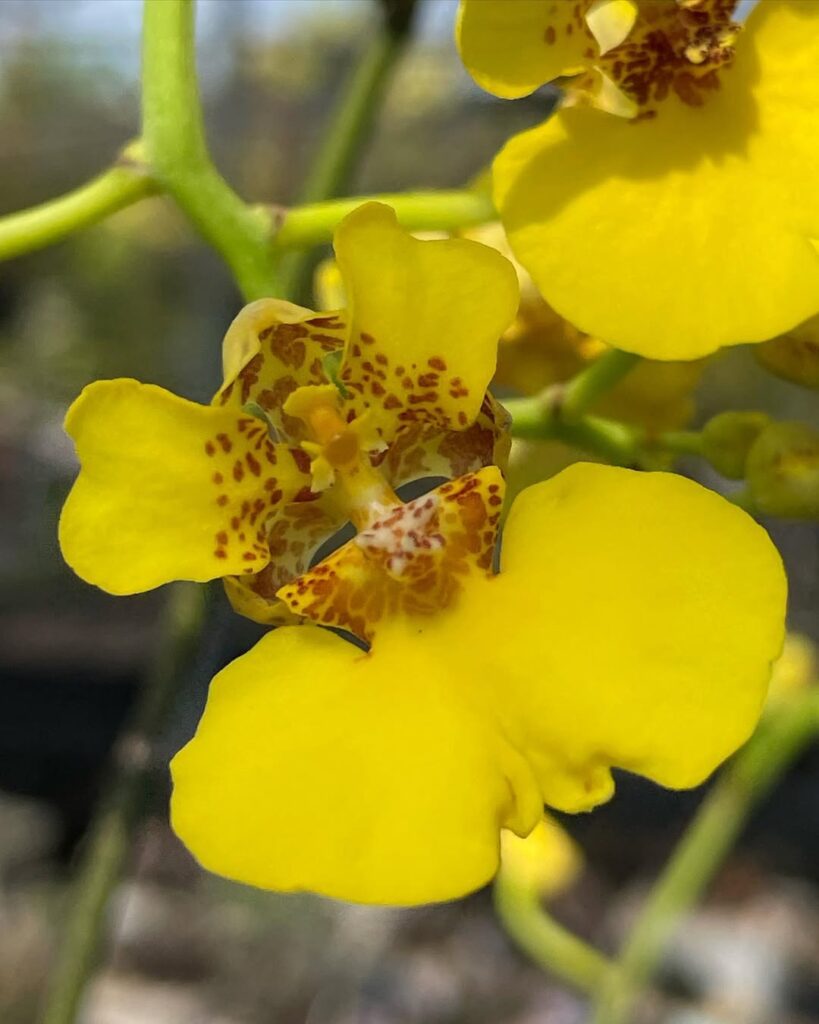
Glossy, radiant yellow flowers that shine as if lit by an internal sun, perfect for bold statements.
Oncidium ansiferum
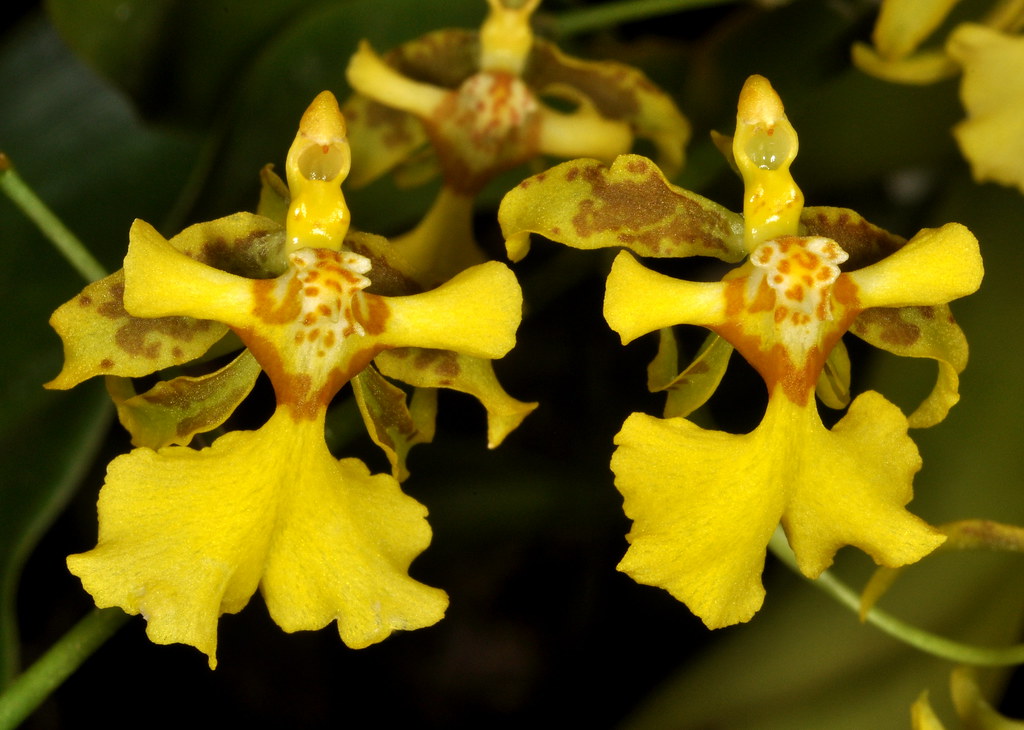
Its twisted, ribbon-like blooms create an impression of fluidity and movement, enchanting to behold.
Oncidium anthocrene

Small, intricately designed flowers add understated sophistication to any orchid collection.
Oncidium ariasii
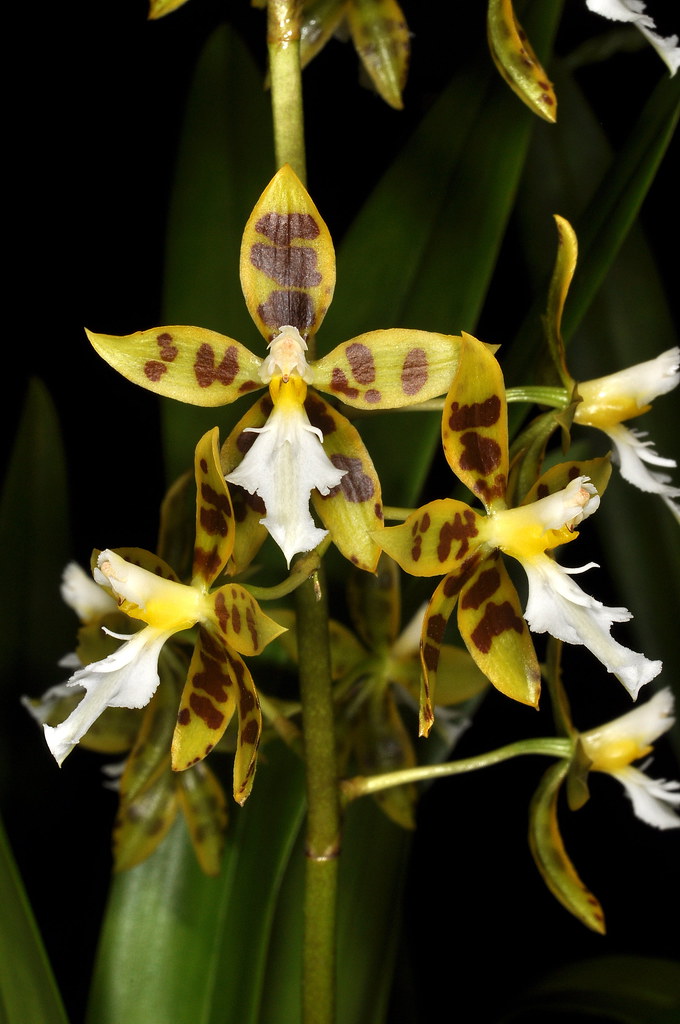
The intricate designs on its delicate flowers seem to celebrate the artistry of nature itself.
Oncidium aristuliferum
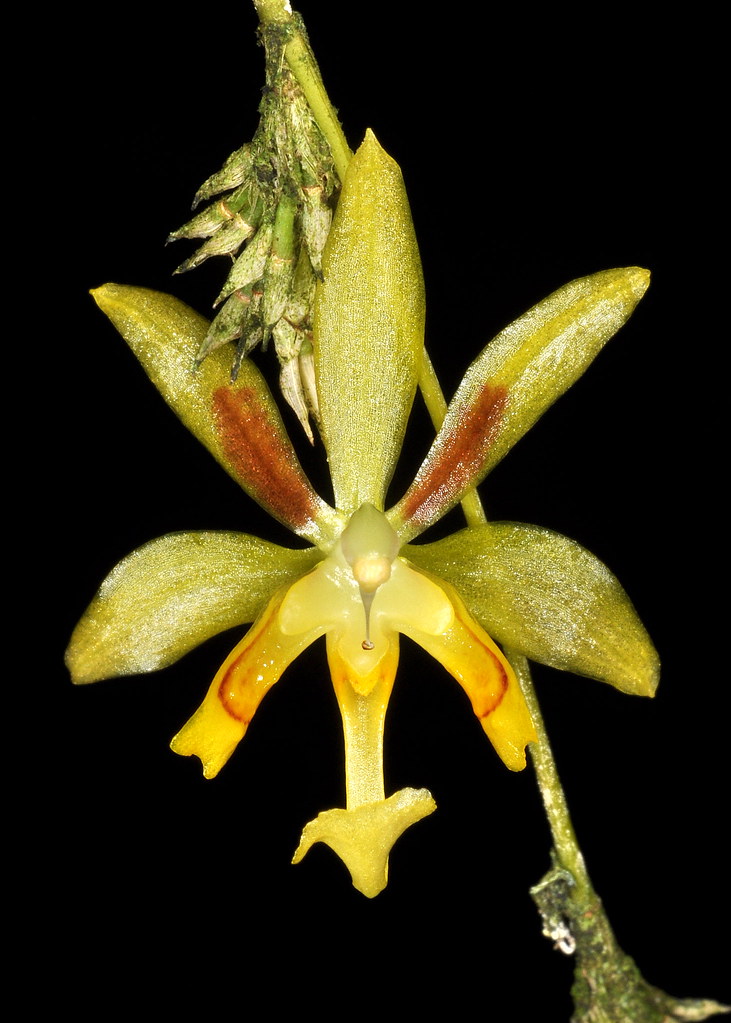
Bright yellow petals gracefully arch outward, creating a sense of drama and elegance.
Oncidium armatum
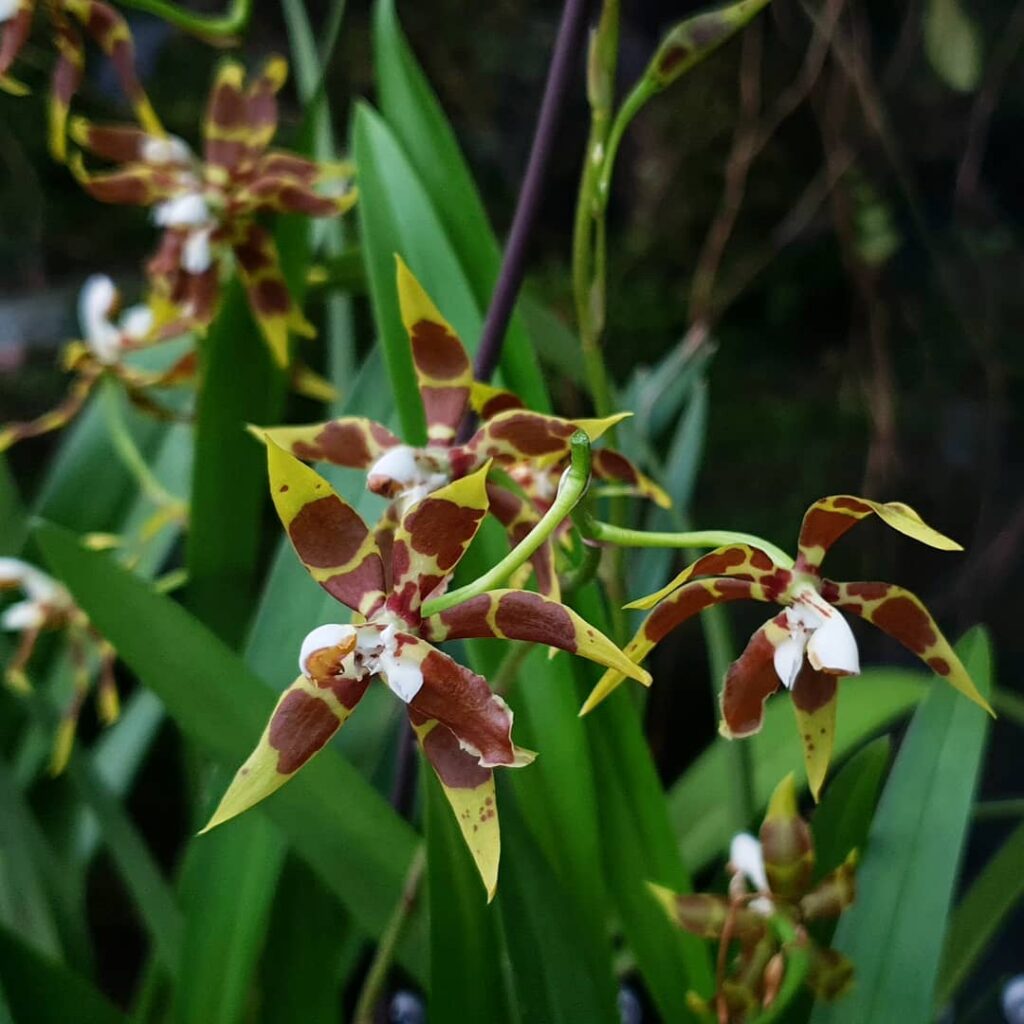
Its robust sprays of bright yellow flowers burst forth like a floral firework display.
Oncidium aspidorhinum
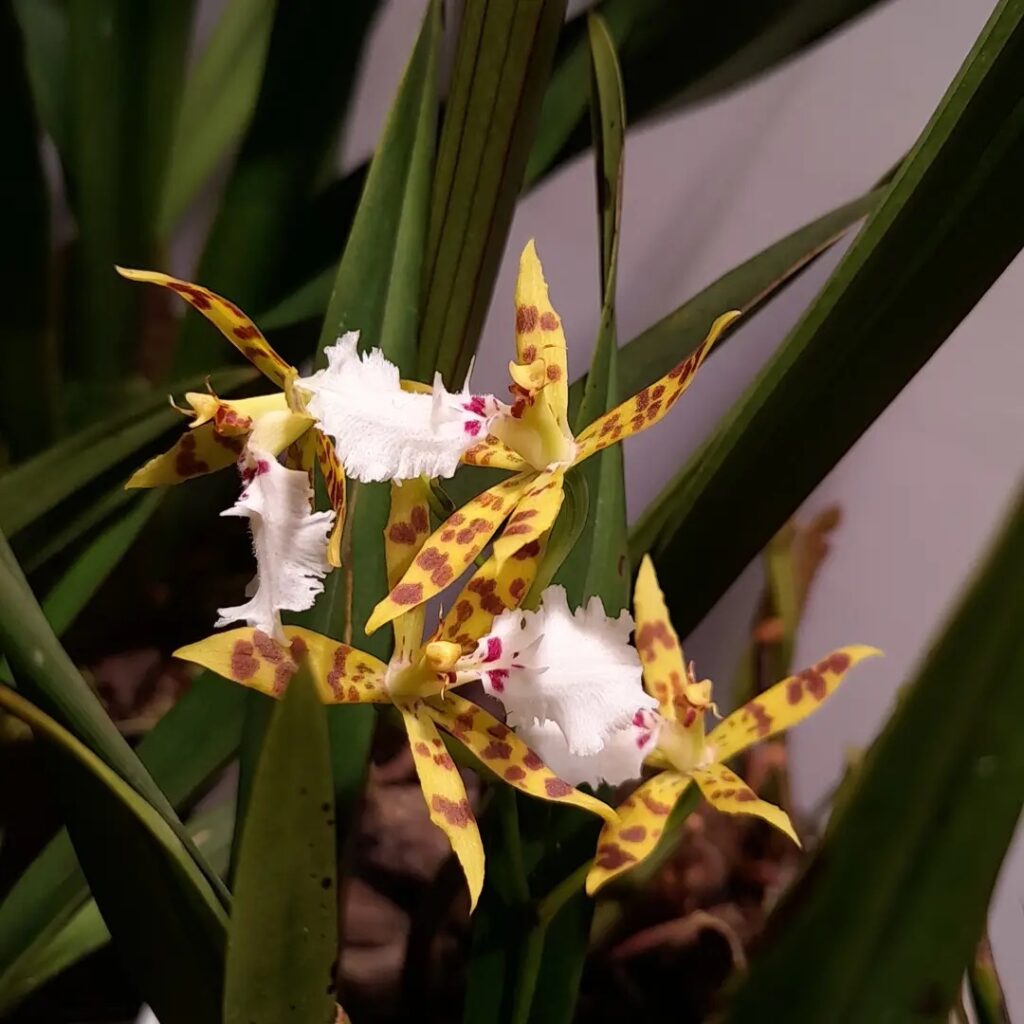
Tiny suns of vivid yellow brighten collections with their vibrant and cheerful presence.
Oncidium astranthum
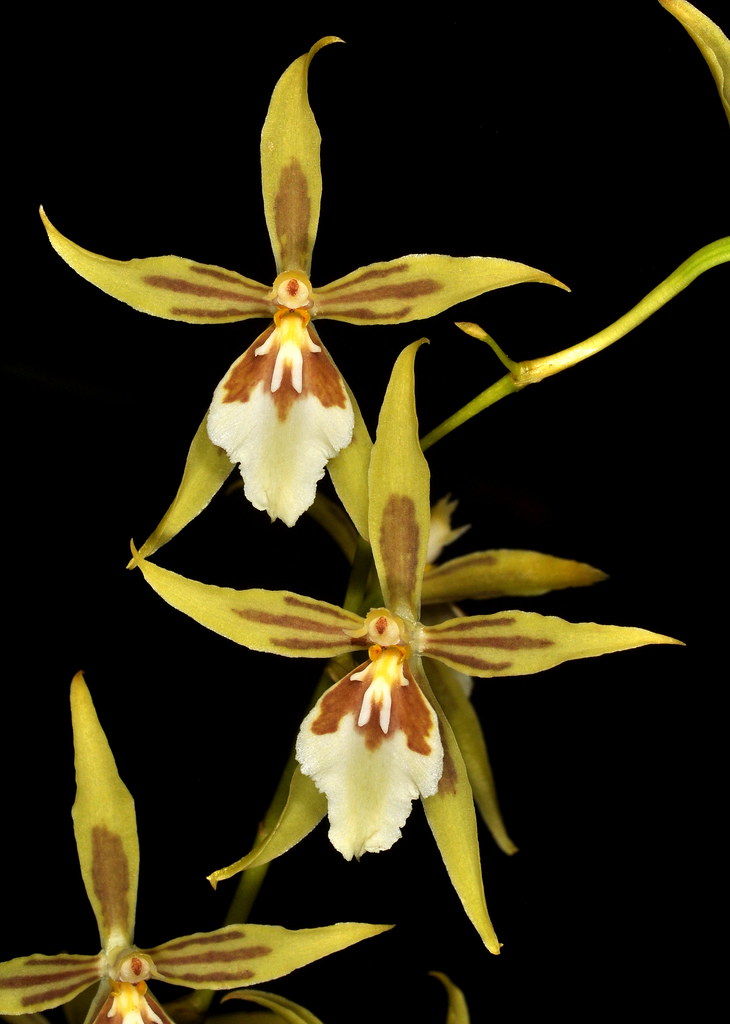
Small golden blossoms enchant the senses with their sweet fragrance and subtle beauty.
Oncidium aurarium
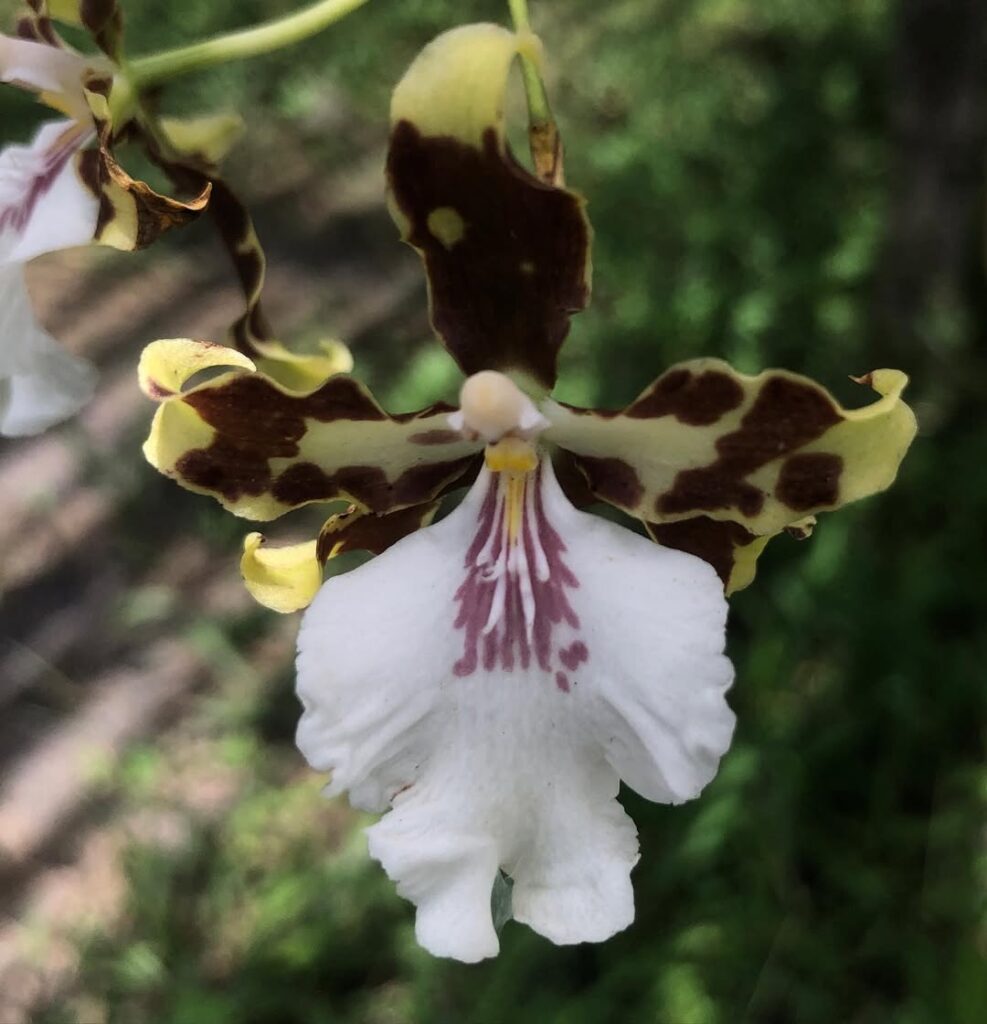
Its radiant golden blooms capture the warmth and energy of sunlight, lifting spirits effortlessly.
Oncidium auriculatum

Intricately structured petals of vibrant yellow exude boldness and refined beauty.
Oncidium baueri
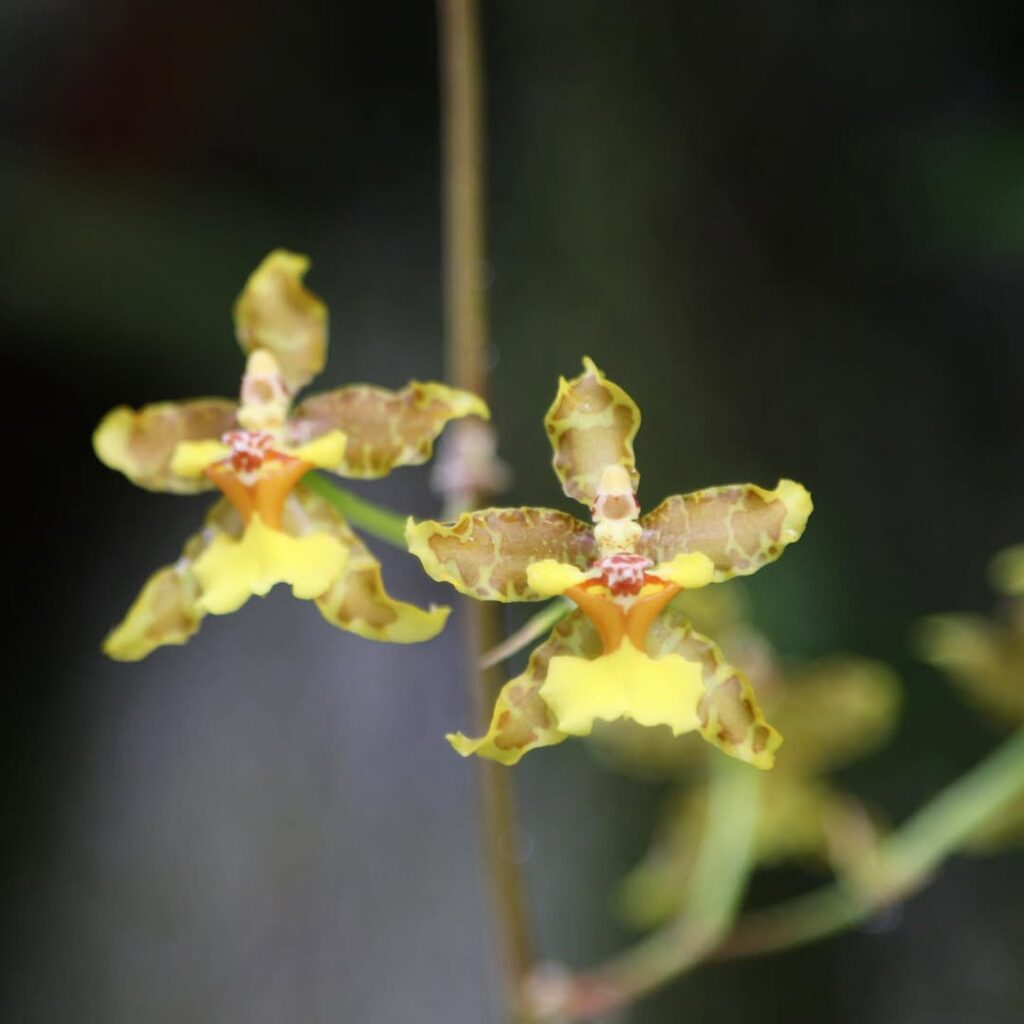
Robust sprays of dazzling yellow blooms uplift and brighten any environment.
Oncidium blandum
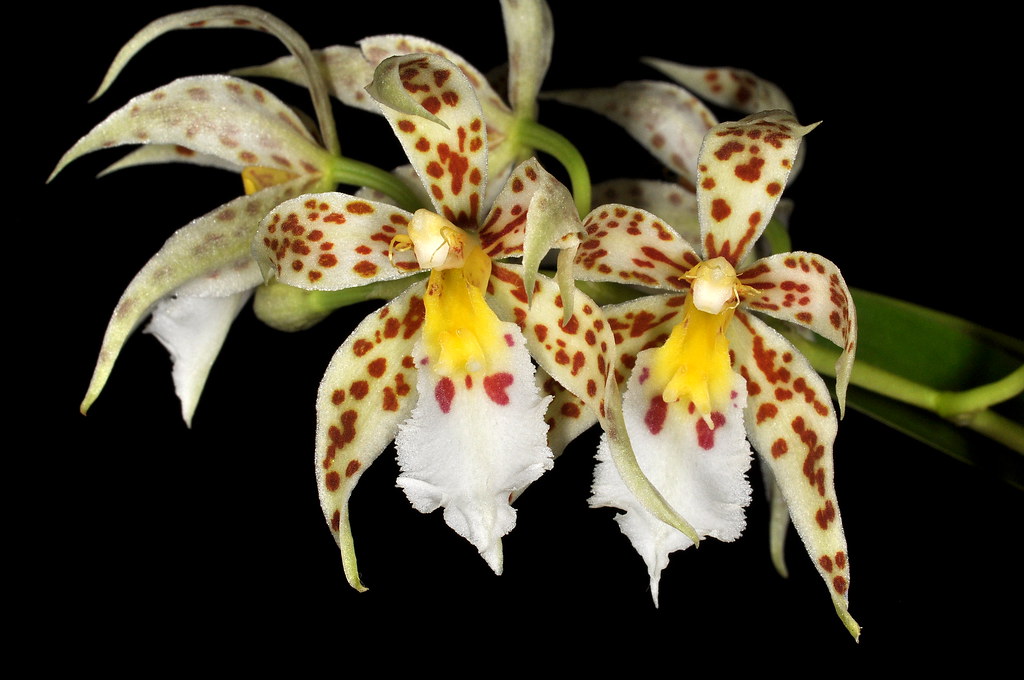
Bright yellow blooms with elongated petals create a striking visual impact.
Oncidium boothianum

Large sprays of radiant golden blossoms command attention and admiration.
Oncidium bracteatum
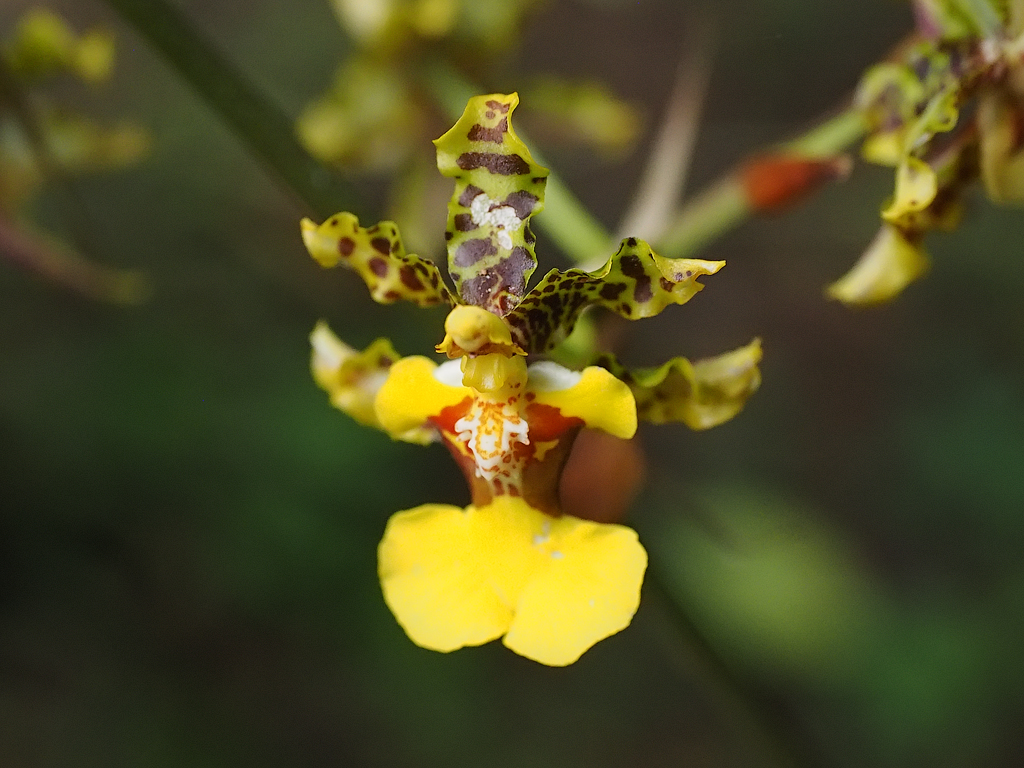
Clusters of brilliantly patterned yellow flowers enliven any collection with their lively energy.
Oncidium buchtienoides
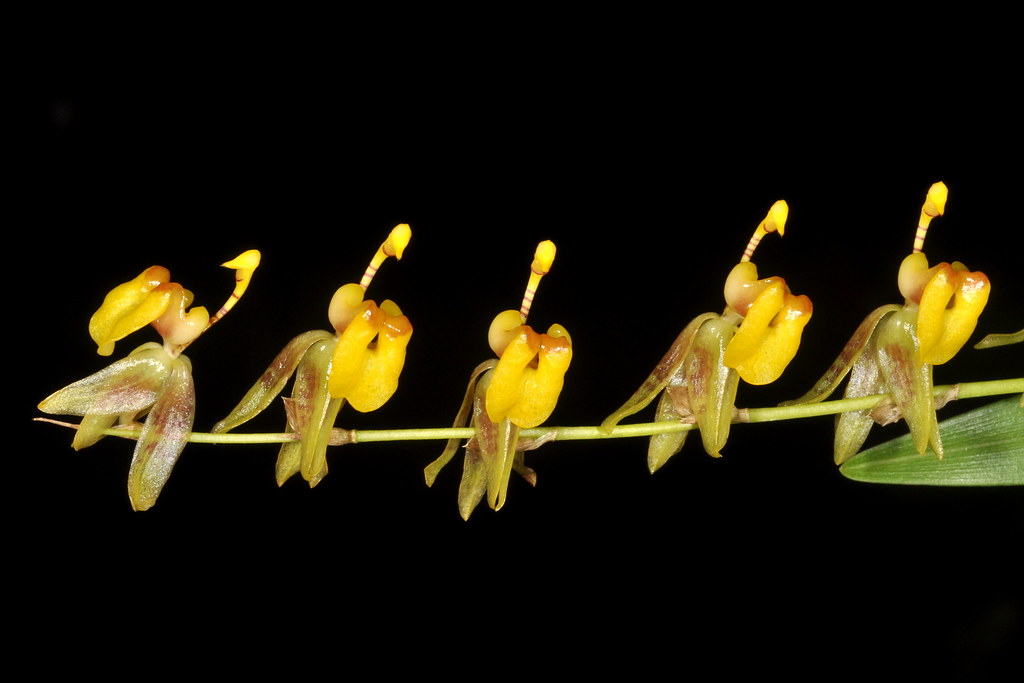
A rare species with small, intricate flowers and a subtle fragrance, ideal for collectors.
Oncidium cajamarcae
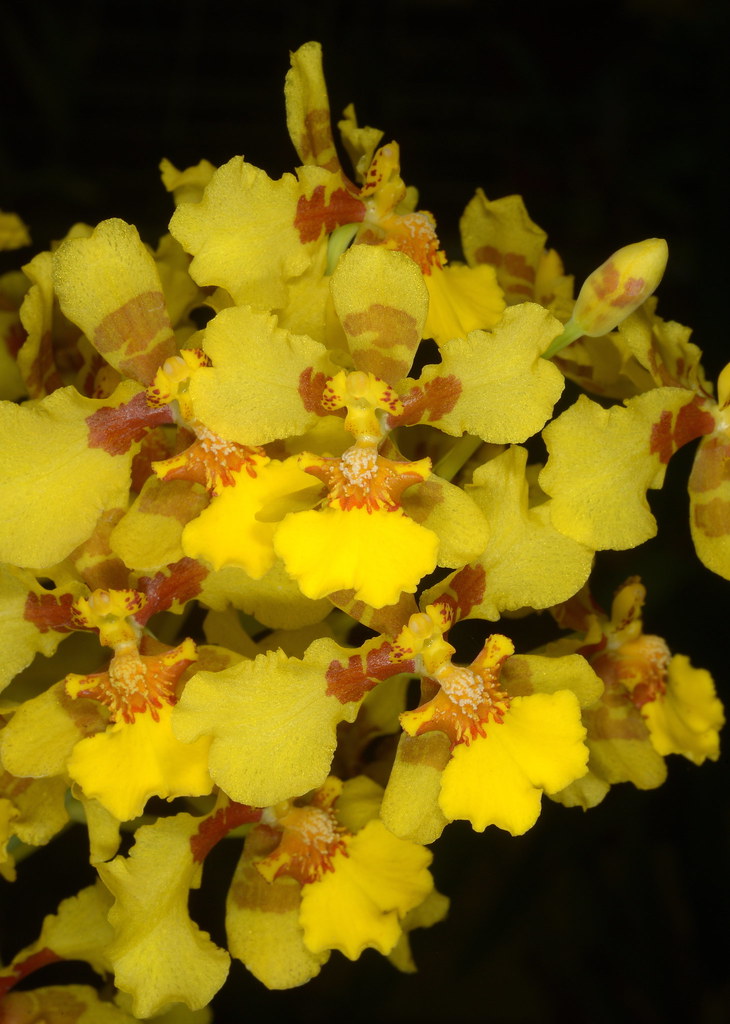
Graceful blooms with slender petals and radiant hues bring charm and tropical appeal.
Oncidium calanthum
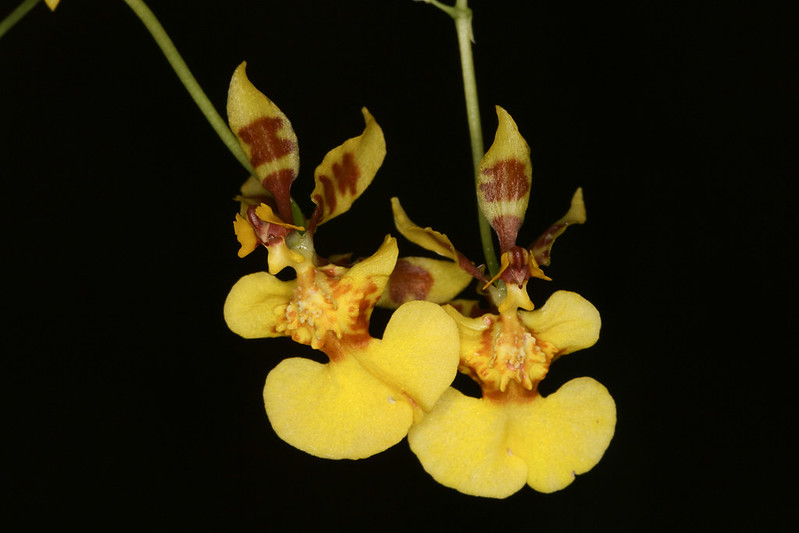
Fragrant golden blooms radiate a warmth and vitality that enriches any space.
Oncidium cariniferum
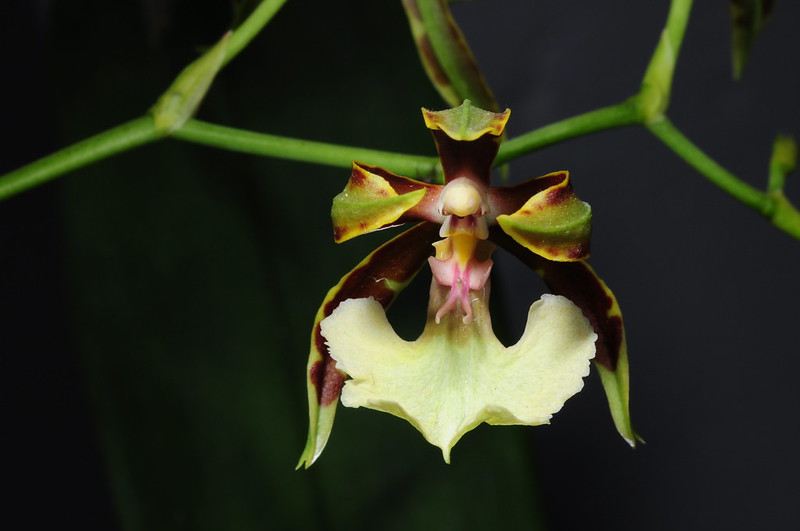
An elegant species with creamy flowers touched by hints of warm brown accents.
Oncidium cebolleta
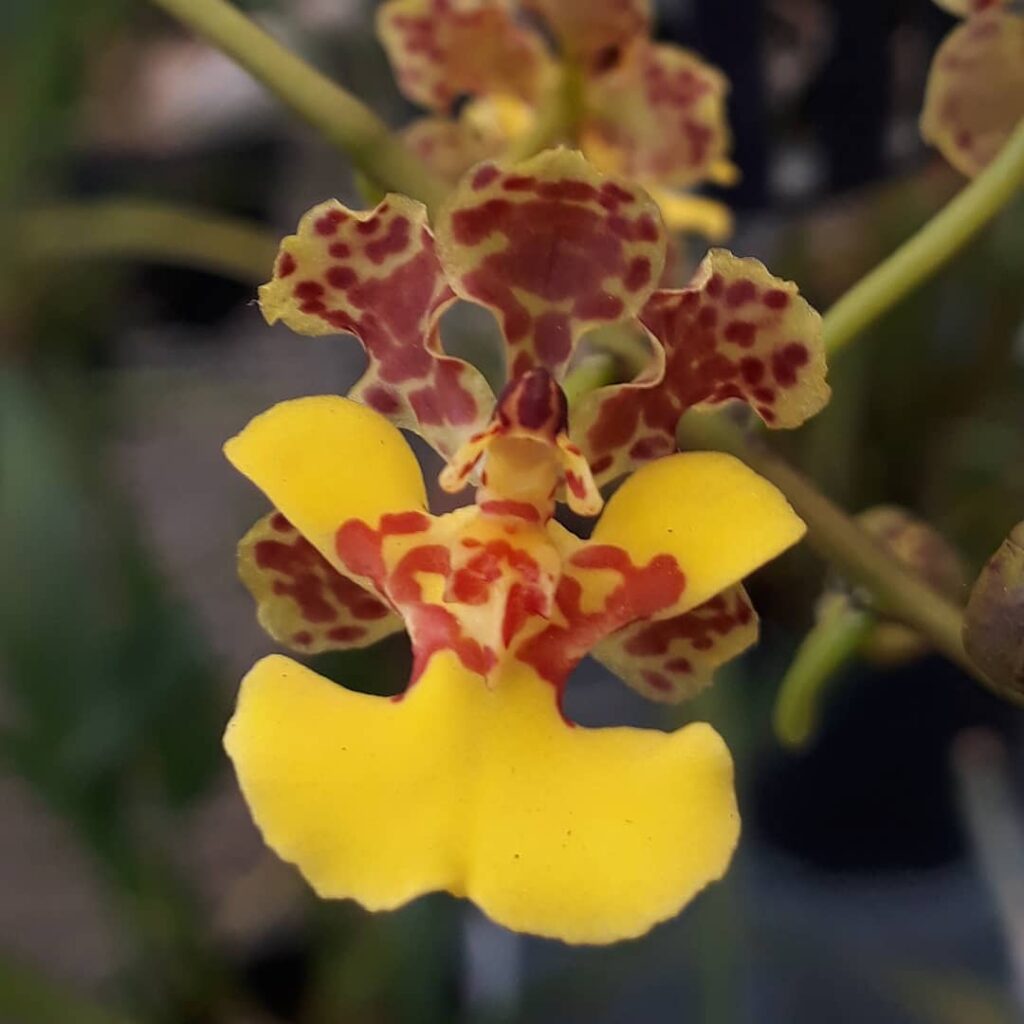
Grass-like foliage complements its dainty yellow flowers, bringing a minimalist charm.
Oncidium cheirophorum
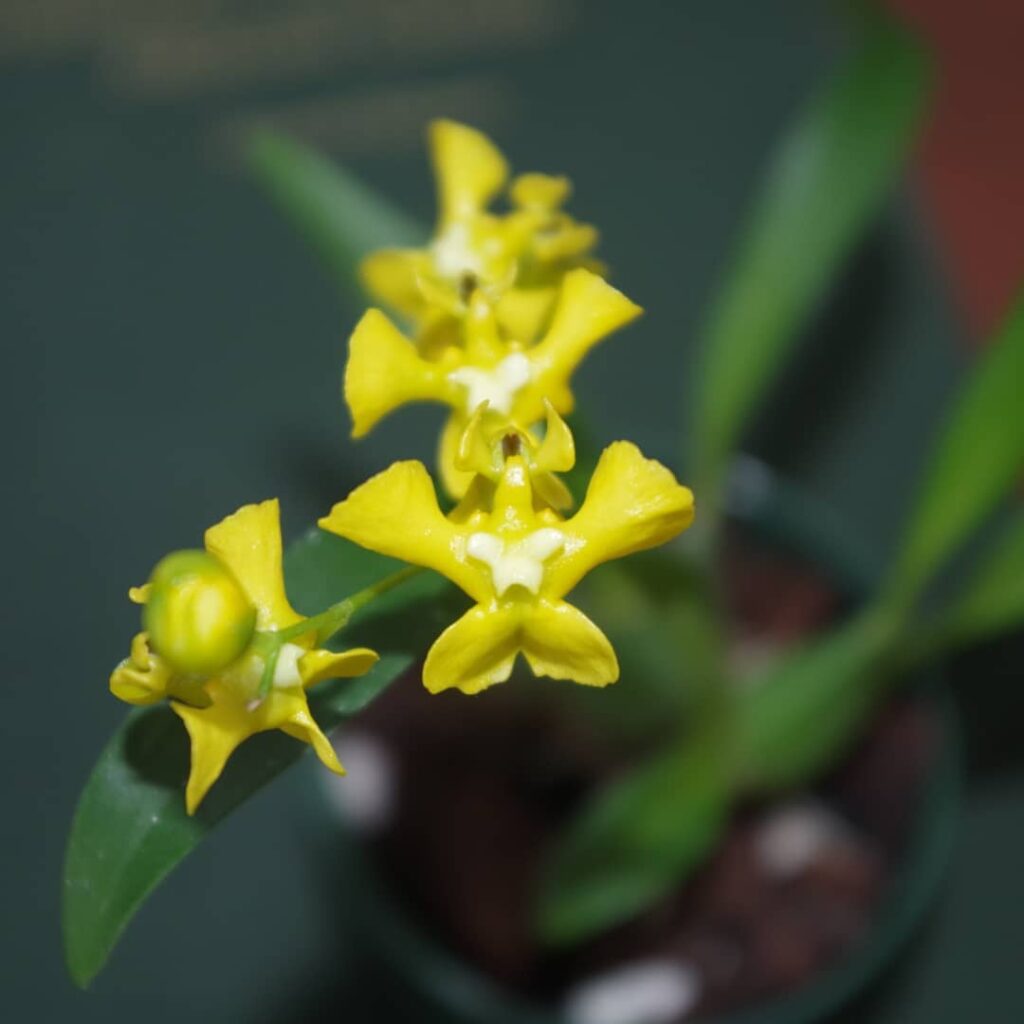
Clusters of golden-yellow flowers radiate sweetness and light, perfect for captivating displays.
Oncidium chrysopterum

Golden petals and bold markings reflect the sun’s vibrant energy, dazzling onlookers.
Oncidium chrysomorphum
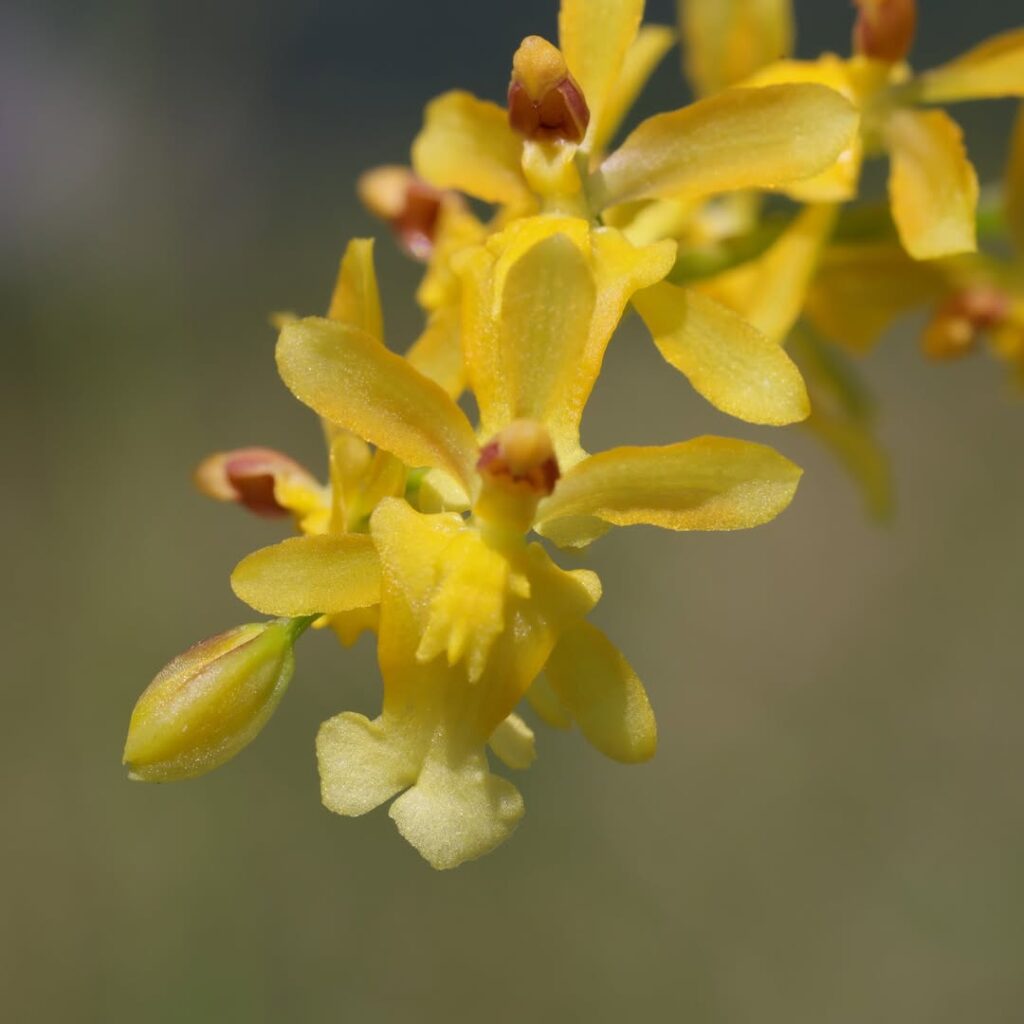
Delicate blooms crafted with precise patterns offer breathtaking botanical artistry.
Oncidium croesus

A charming species with delicate yellow flowers and a cheerful appearance, perfect for uplifting spaces.
Oncidium dactyliferum
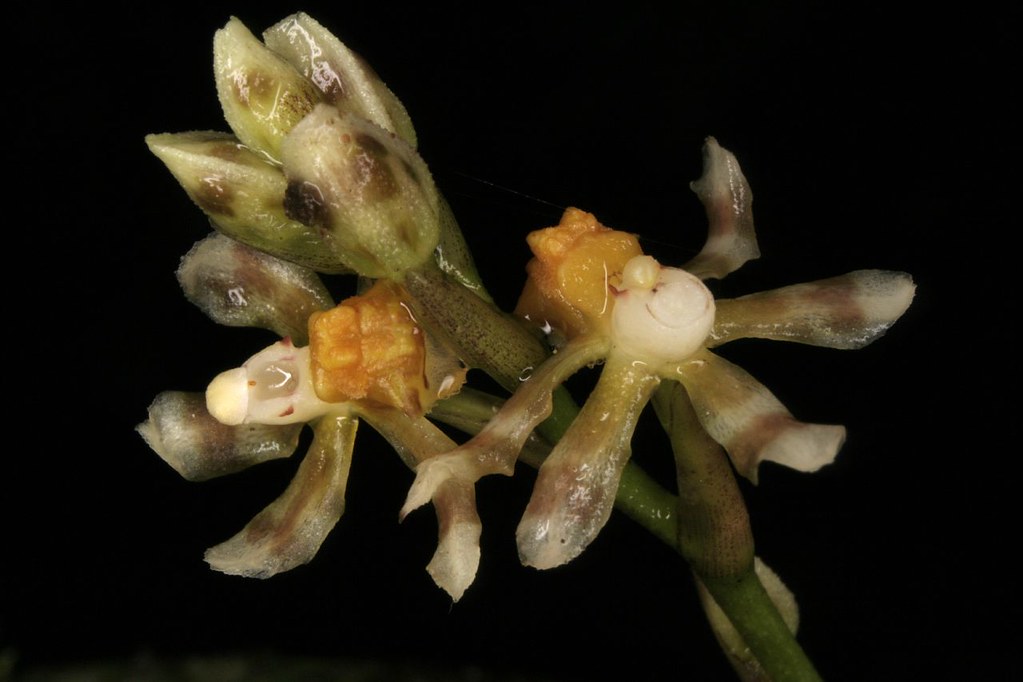
Boldly patterned golden flowers exude tropical drama, ideal for dynamic arrangements.
Oncidium dasytyle
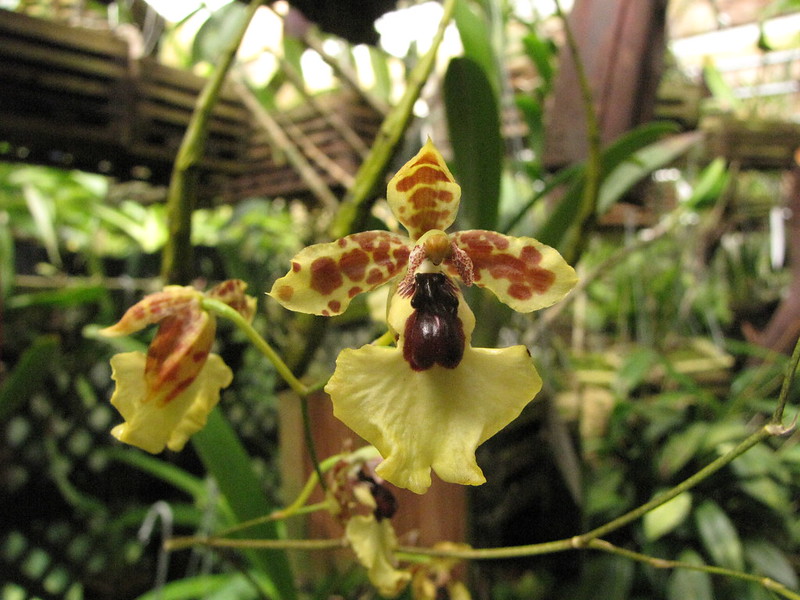
A striking species with golden-yellow flowers and a unique lip structure, captivating to orchid enthusiasts.
Oncidium ensatum
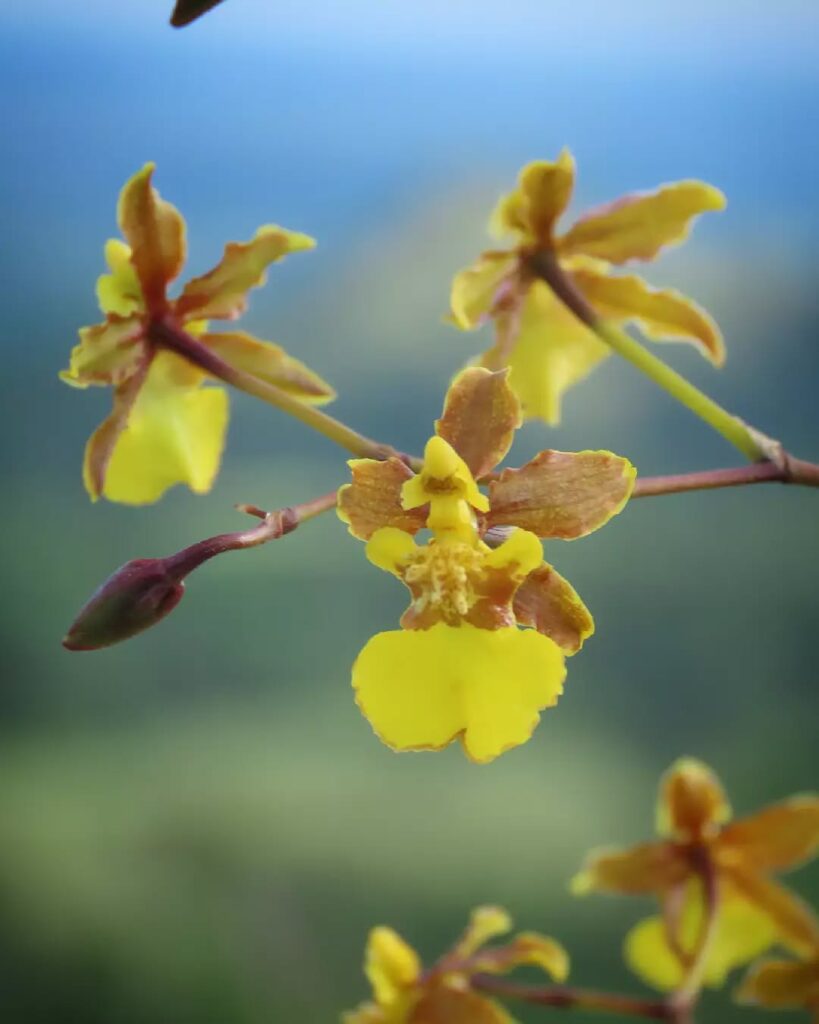
Petite yellow blossoms and a gentle fragrance enchant those drawn to smaller orchid varieties.
Oncidium excavatum
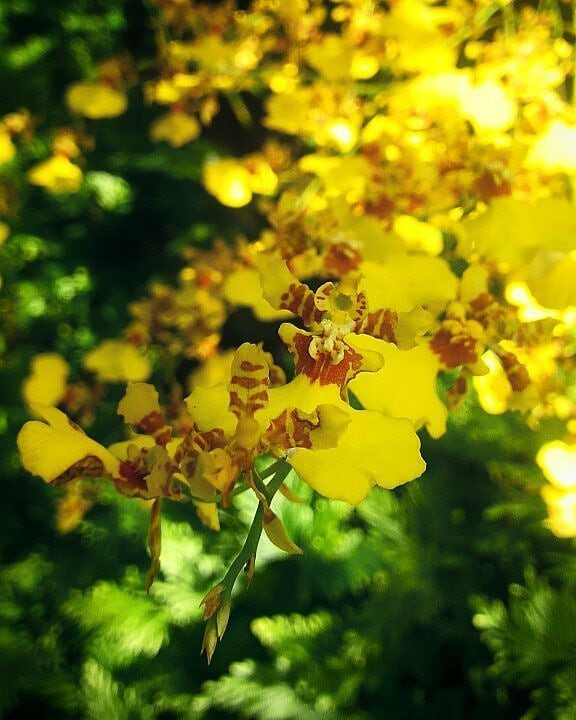
Rare and captivating, its unique blooms are the epitome of exotic orchid beauty.
Oncidium flexuosum

The cascading sprays of golden blooms, known as “Golden Shower Orchids,” dazzle like a waterfall of flowers.
Oncidium forbesii
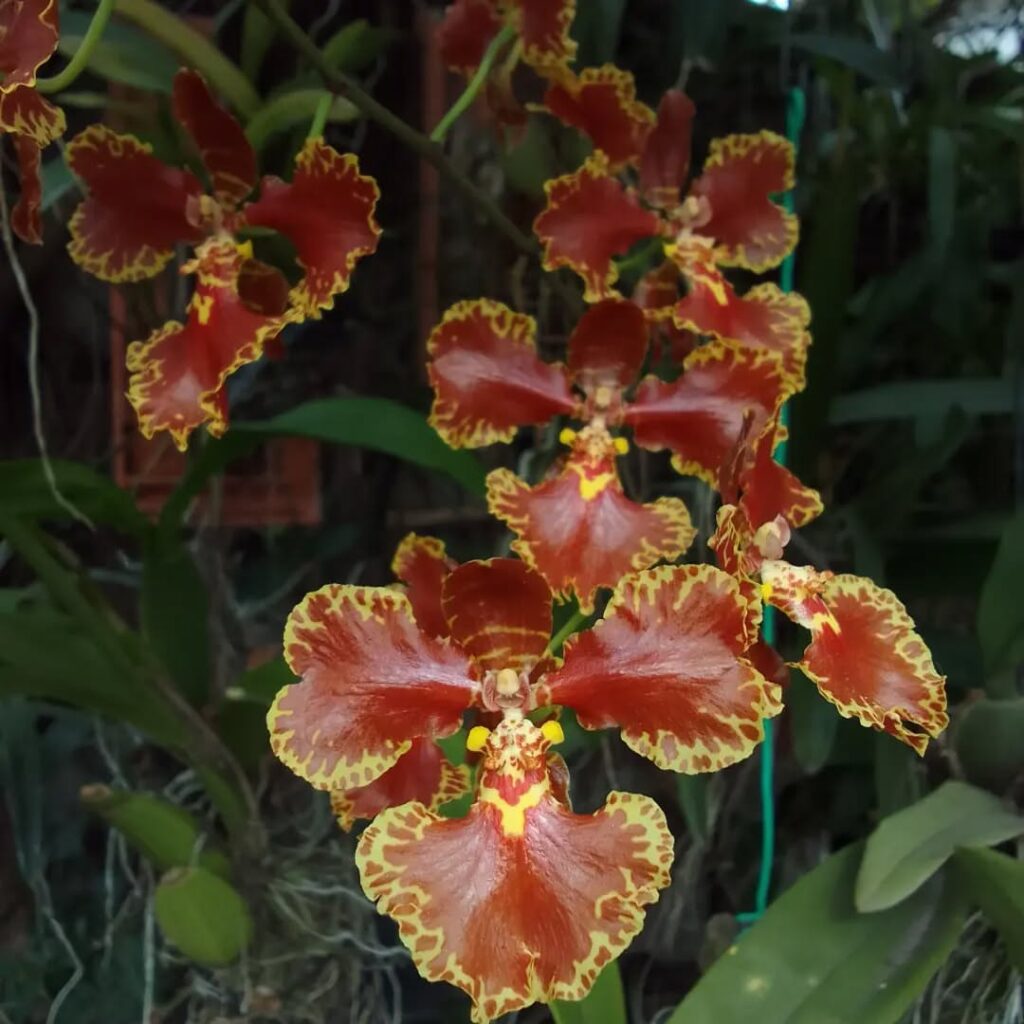
Elegant golden blooms with understated brown accents create an ambiance of quiet luxury.
Oncidium fuscatum
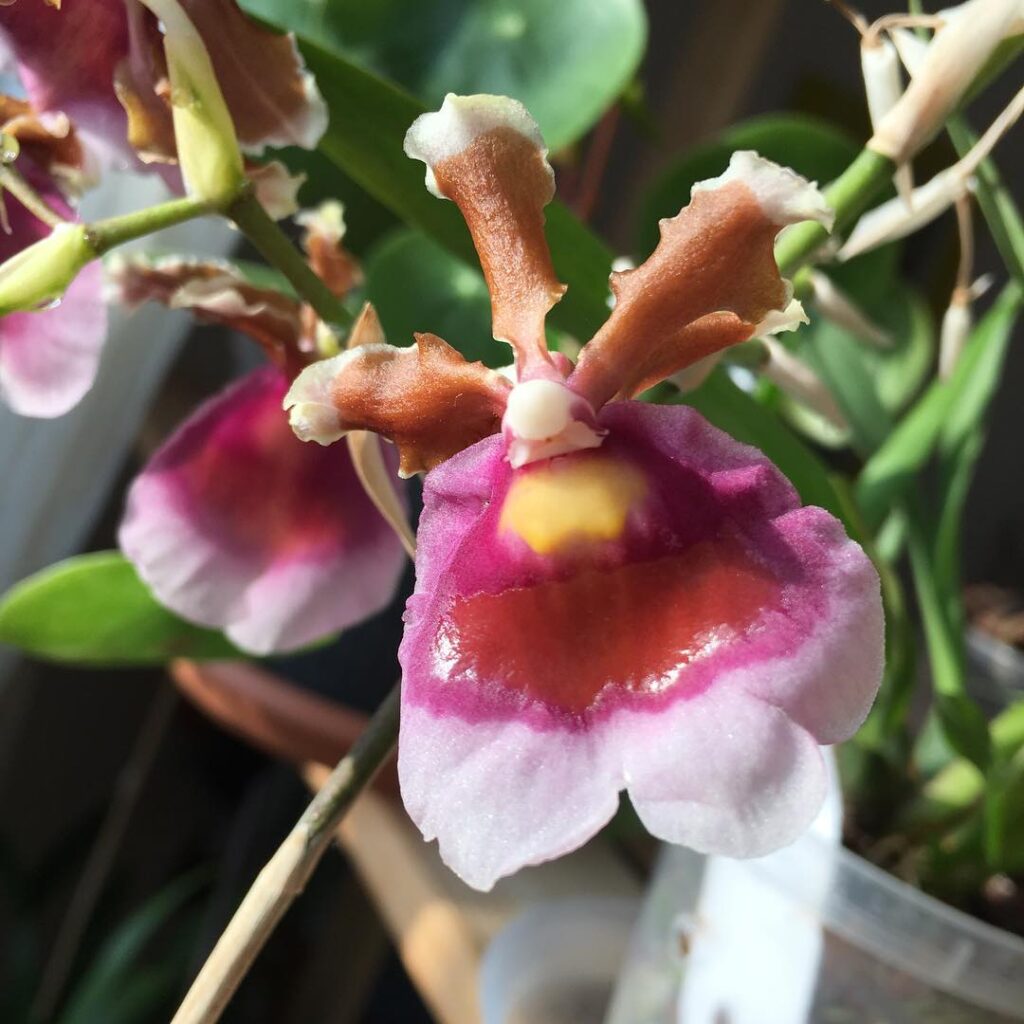
Dramatic dark-brown petals with glowing yellow accents add intrigue and flair.
Oncidium gardneri

Joyful and vibrant, its golden flowers with intricate patterns feel alive with tropical energy.
Oncidium hastatum
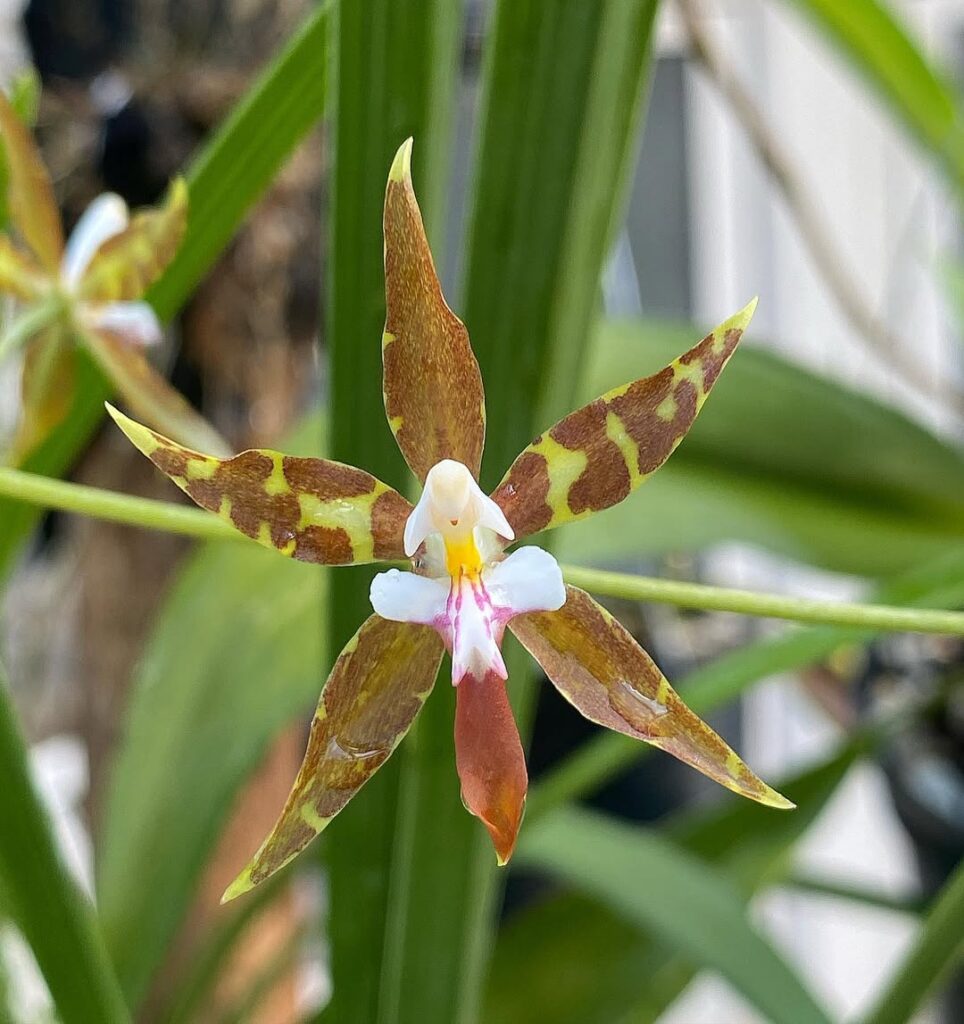
Ruffled golden petals with subtle accents lend a regal air to this majestic orchid.
Oncidium harrisonianum

Its bold sprays of yellow flowers exude vitality, brightening gardens and homes effortlessly.
Oncidium lanceanum

Vivid yellow petals paired with a soft fragrance bring the tropics to life in any setting.
Oncidium leucochilum

Creamy flowers with distinctive brown markings add sophistication and charm.
Oncidium maculatum
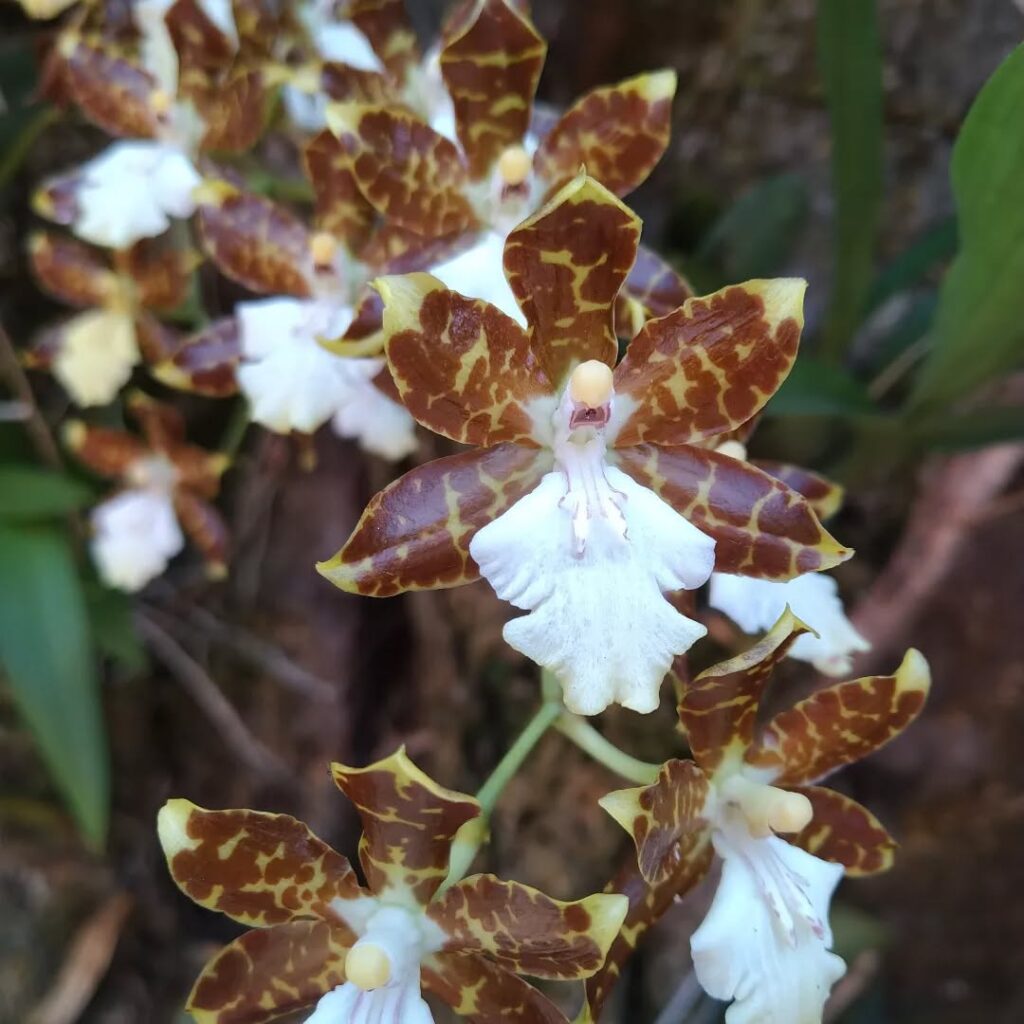
Spotted petals in earthy tones of yellow and brown offer bold, natural beauty.
Oncidium microchilum
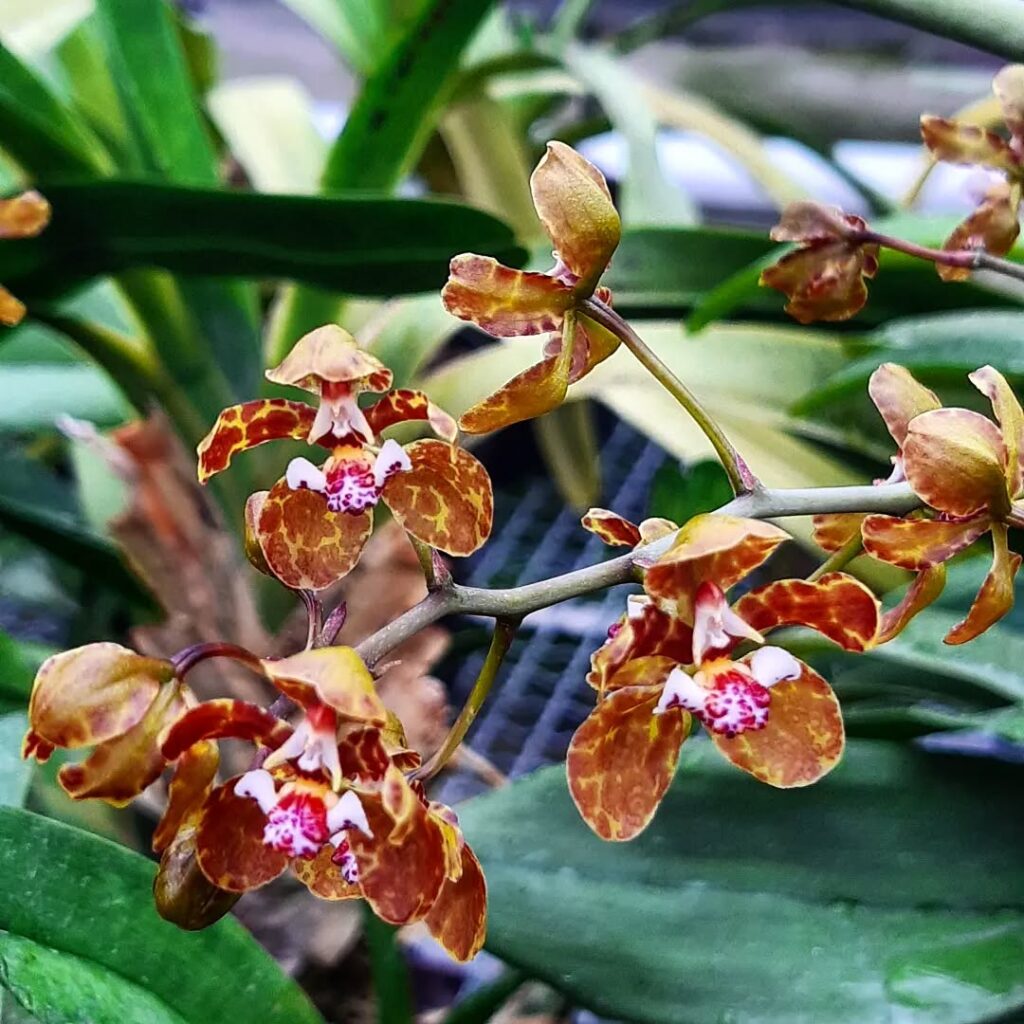
Its tiny yet exquisite brown flowers bring charm to intimate spaces.
Oncidium ornithorhynchum
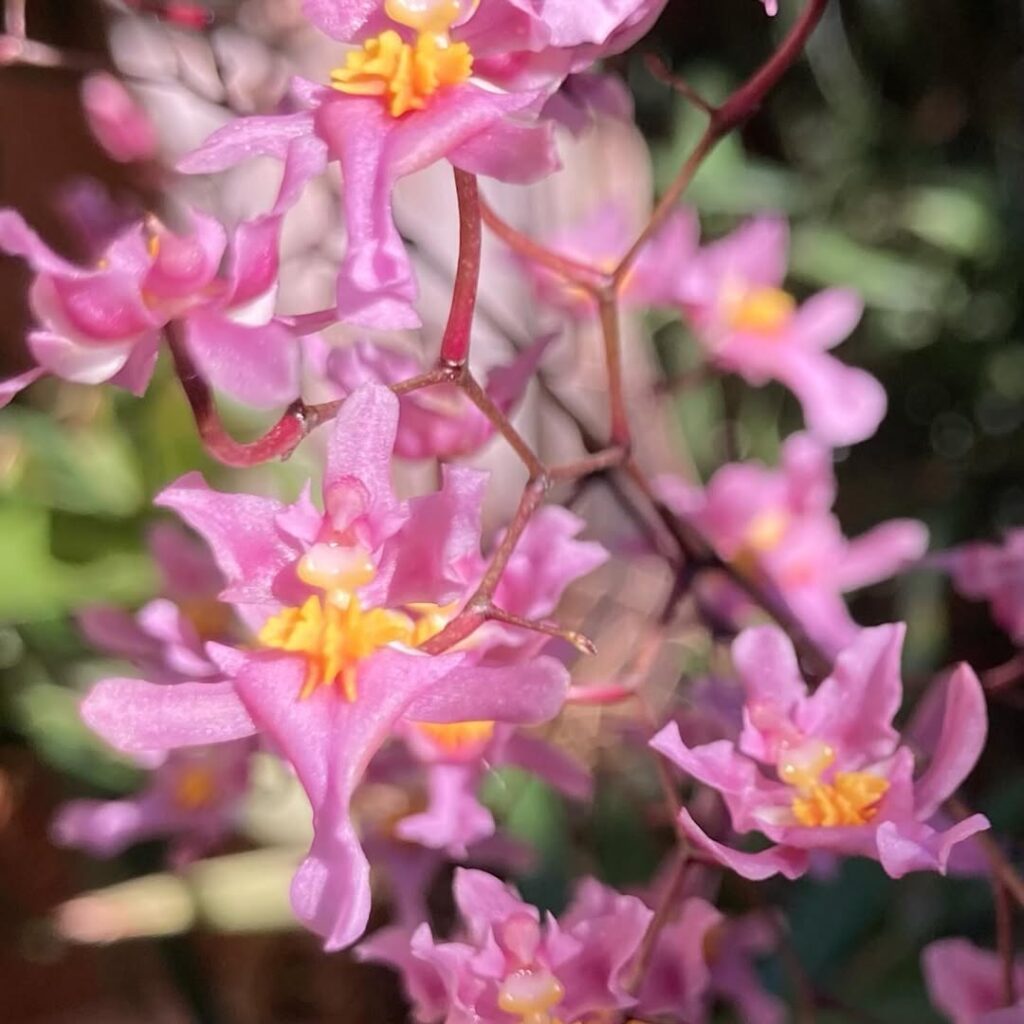
Clusters of pink and purple blooms fill spaces with their sweet fragrance and delicate charm.
Oncidium sphacelatum
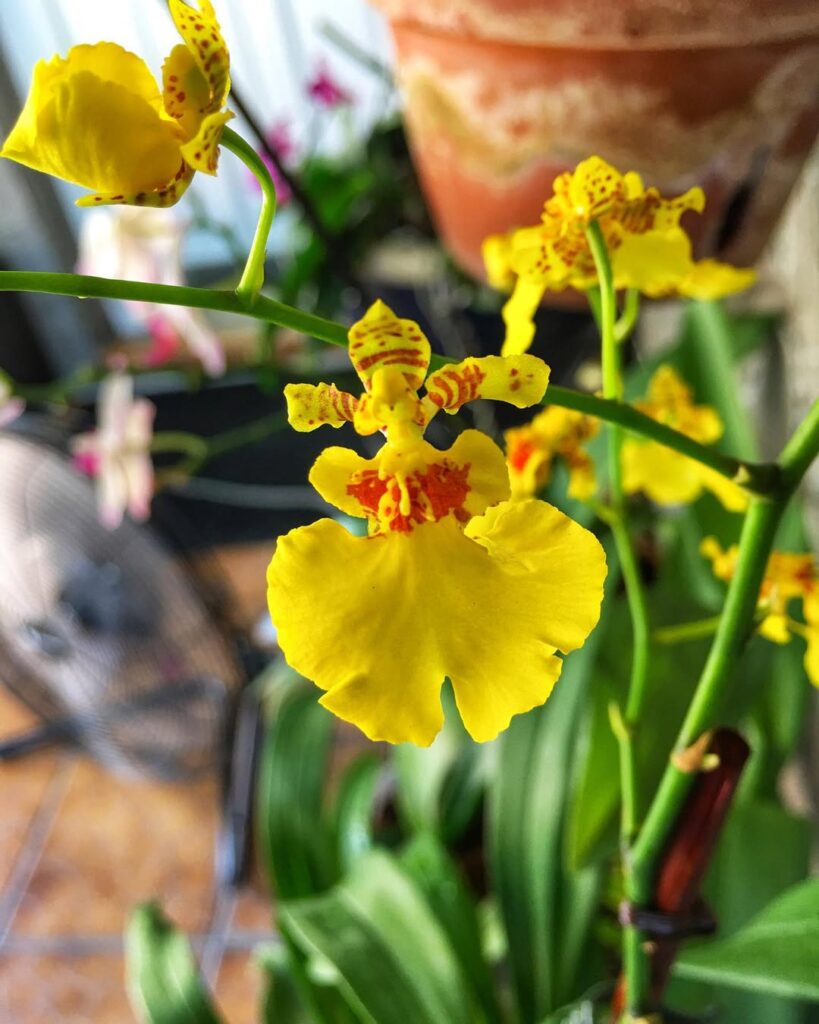
Long sprays of richly colored yellow blooms accented with brown create a striking visual.
Oncidium stenotis
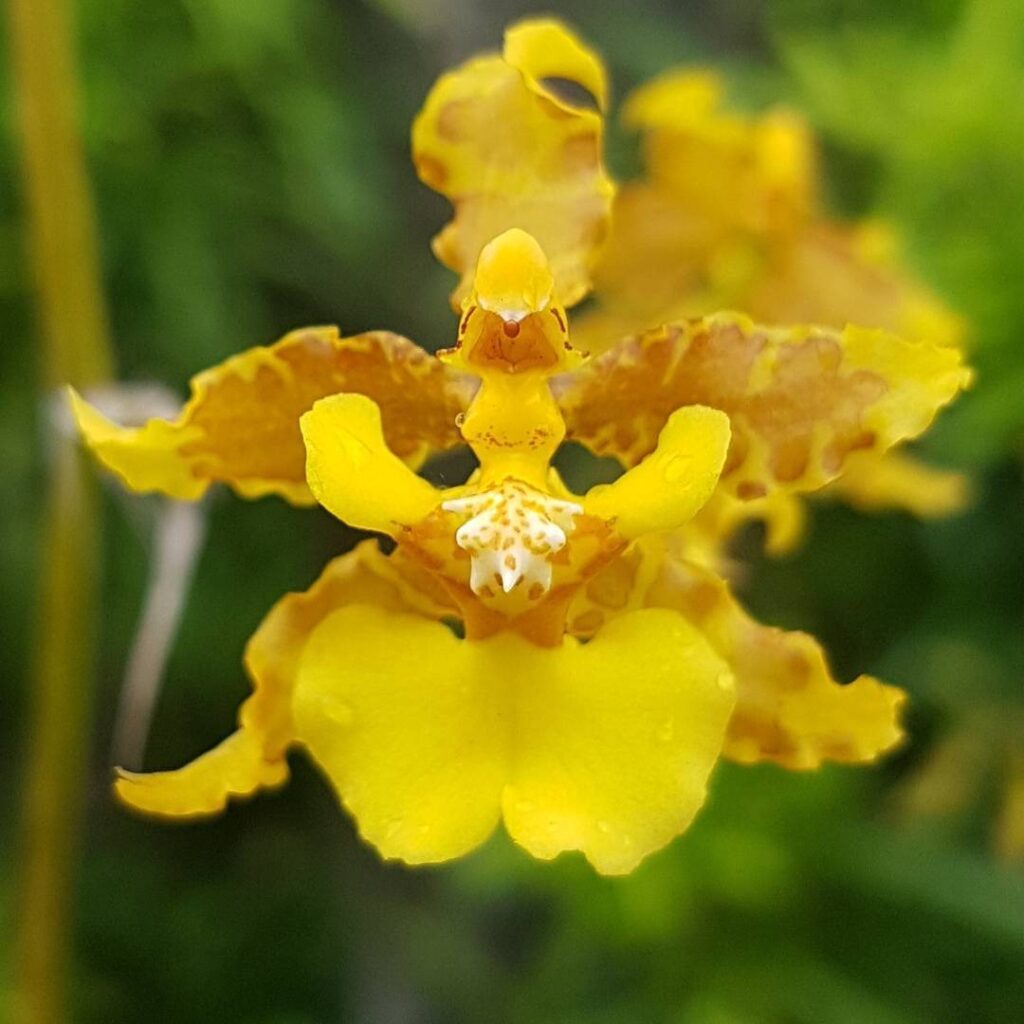
Subtly charming with fine brown markings, its delicate yellow flowers exude understated elegance.
Oncidium tigrinum
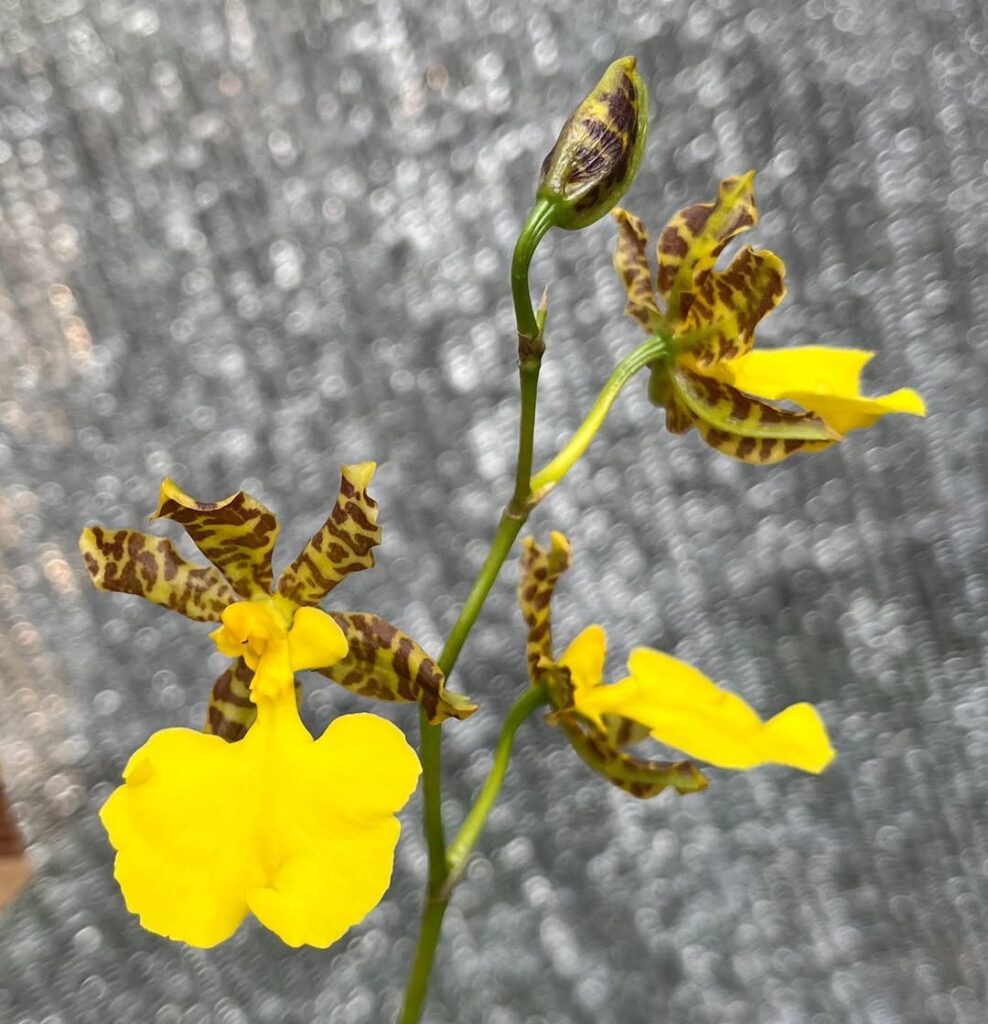
Tiger-striped yellow and brown flowers add wild, exotic flair to collections.
Oncidium varicosum

Butterfly-like blooms with radiant yellow hues bring joy and energy to any display.
Essential Growing Conditions for Oncidium Orchids
Light and Temperature Requirements
To thrive in your home environment, Oncidium orchids need specific light and temperature conditions that mirror their natural habitat. Place them in bright, indirect sunlight, ideally near an east- or south-facing window with filtered light for 12-14 hours daily.
These orchids prefer daytime temperatures between 75-85°F (24-29°C) and nighttime temperatures of 65-70°F (18-21°C). You’ll know your lighting is correct when the leaves are bright green; dark green indicates insufficient light, while yellowish leaves signal too much sun.
During winter months, maintain temperatures above 60°F (16°C), and protect your orchids from cold drafts near windows or air conditioning vents.
Watering and Humidity Needs
Maintaining proper moisture levels stands as the most critical factor in Oncidium orchid care. You’ll need to water thoroughly when the potting medium feels slightly dry to the touch, typically every 5-7 days during growing season. Don’t let the roots stay wet for extended periods, as this can lead to root rot.
Keep humidity between 50-70% by using a humidity tray or running a humidifier. During winter months, you’ll water less frequently, about every 10-14 days. Check moisture by inserting a wooden skewer into the growing medium – if it comes out clean, it’s time to water.
Suitable Growing Media
Proper growing media works hand-in-hand with your watering routine to keep Oncidium orchids healthy and thriving. You’ll want to choose a well-draining mix that includes medium-grade fir bark, perlite, and charcoal in a 4:1:1 ratio.
For best results, combine sphagnum moss with your bark mix at a 70:30 ratio if you’re growing in warm, dry conditions. Don’t use regular potting soil, as it’ll suffocate your orchid’s roots. Instead, opt for chunks sized between 1/2 to 3/4 inch.
Replace your growing media every 18-24 months, or when you notice it breaking down and becoming compacted.
Watering and Fertilization Requirements
Since Oncidium orchids thrive in environments that mimic their natural habitat, you’ll need to master a balanced watering and fertilization routine. Water your orchid thoroughly when the top inch of potting medium feels dry, typically every 5-7 days in summer and 7-10 days in winter.
Feed your Oncidium with a balanced 20-20-20 fertilizer, diluted to quarter-strength, every other watering during the growing season. During winter’s dormancy period, reduce fertilizing to once monthly. You’ll know you’re overfeeding if you spot salt buildup on the potting medium – if this happens, flush the pot thoroughly with plain water.
Common Pests and Disease Prevention
Like other orchids, Oncidiums can fall prey to several common pests and diseases that you’ll need to watch for. Spider mites, mealybugs, and scale insects frequently target these plants, while root rot and leaf spot diseases can develop in overly wet conditions.
Inspect your orchid’s leaves weekly for tiny webs, cottony masses, or brown spots. If you spot pests, isolate the plant immediately and treat it with neem oil or insecticidal soap. For disease prevention, guarantee proper air circulation, avoid overwatering, and sterilize your pruning tools between uses.
You’ll also want to remove any dead or yellowing leaves promptly, as they can harbor pathogens that might spread to healthy tissue.
Repotting and Propagation Methods
Maintaining healthy roots through regular repotting helps prevent many of the pest and disease issues we’ve discussed. You’ll need to repot your Oncidium orchid every 18-24 months, or when you notice the potting medium breaking down.
To propagate, wait until you see new pseudobulbs forming natural divisions. Using sterilized tools, separate the rhizome into sections with at least 3-4 pseudobulbs each. Confirm each division has healthy roots and active growth points.
For repotting, choose a container 1-2 inches larger than the root mass. Use fresh orchid bark mix, and position the newest growth pointing toward the pot’s center.
Tips for Encouraging Healthy Blooms
Light and Temperature Control
Proper light exposure and temperature control serve as the cornerstones of successful Oncidium orchid blooming. You’ll want to position your orchids in bright, indirect sunlight, ideally near an east-facing window where they’ll receive 4-6 hours of filtered morning light.
Maintain daytime temperatures between 75-85°F (24-29°C), with nighttime temperatures dropping 10-15 degrees lower. During winter months, you can protect your orchids from cold drafts by moving them a few inches away from windows.
If your leaves turn yellowish, they’re getting too much light. Conversely, dark green leaves signal insufficient light exposure. You’ll know you’ve found the sweet spot when leaves appear bright, grass-green.
Proper Fertilizing Schedule
While these stunning orchids aren’t heavy feeders, they’ll need regular fertilizing to produce their spectacular blooms. Apply a balanced, water-soluble fertilizer (20-20-20) every two weeks during the growing season, diluted to half-strength to prevent root burn.
During winter months, reduce fertilizing to once monthly, using a lower nitrogen formula (10-30-20) to encourage blooming rather than leaf growth. If you’re growing in bark, supplement with magnesium by adding 1 teaspoon of Epsom salts per gallon of water every third feeding.
Always water thoroughly before fertilizing, and never feed a dry plant – you’ll risk damaging the sensitive root system.
Strategic Pruning Techniques
Since spent flower spikes can drain valuable energy from your Oncidium orchid, strategic pruning becomes essential for maintaining healthy blooms. Cut flower spikes 1/2 inch above the nearest node once blooms have completely faded, using sterilized pruning shears to prevent infection.
When you spot yellowing or damaged pseudobulbs, remove them at the base where they connect to the rhizome. Don’t forget to trim away any dead or rotting roots during repotting – they’ll appear brown and mushy compared to healthy, firm roots.
For back bulbs without leaves, you can either remove them or leave two behind each growth to store nutrients.
